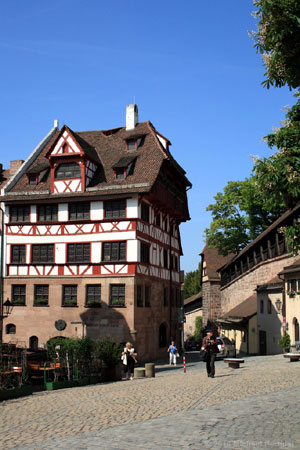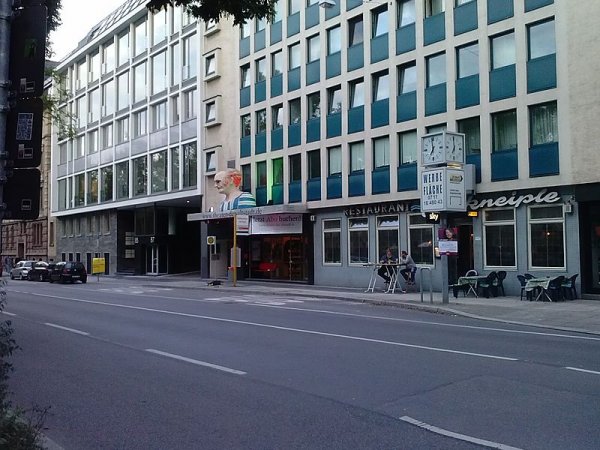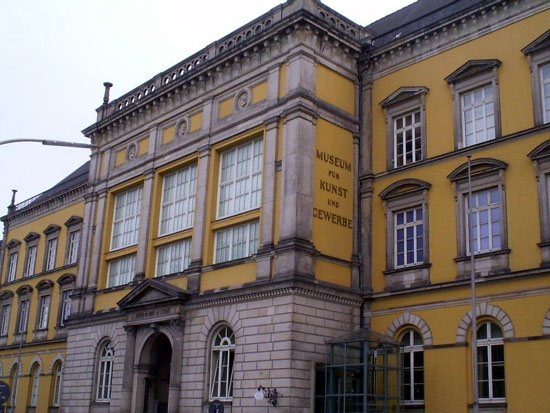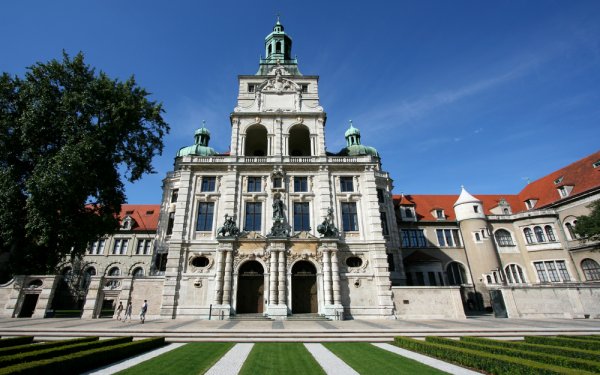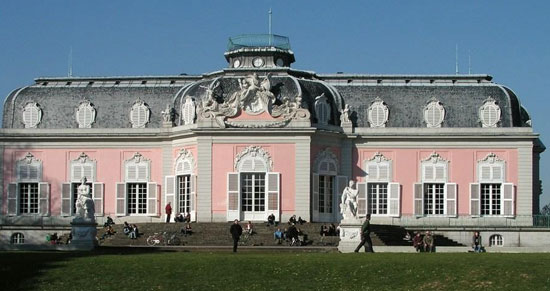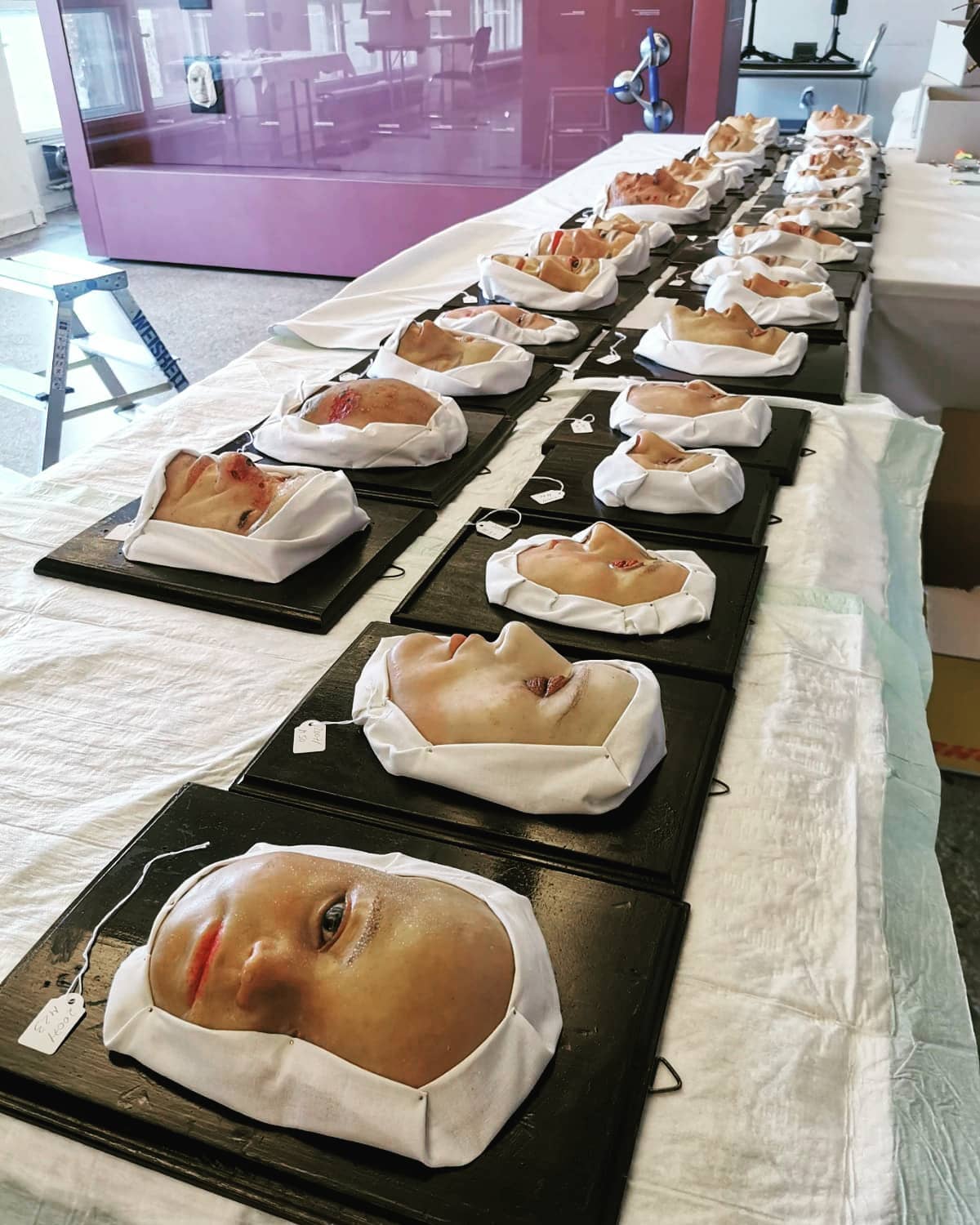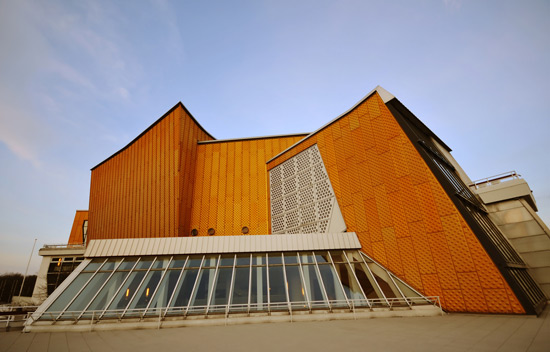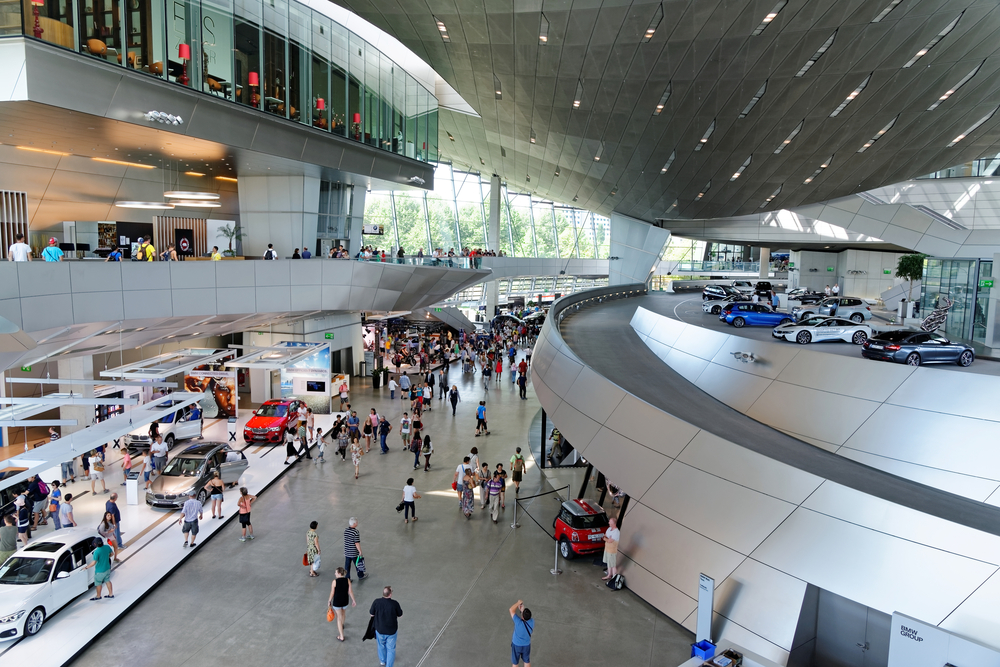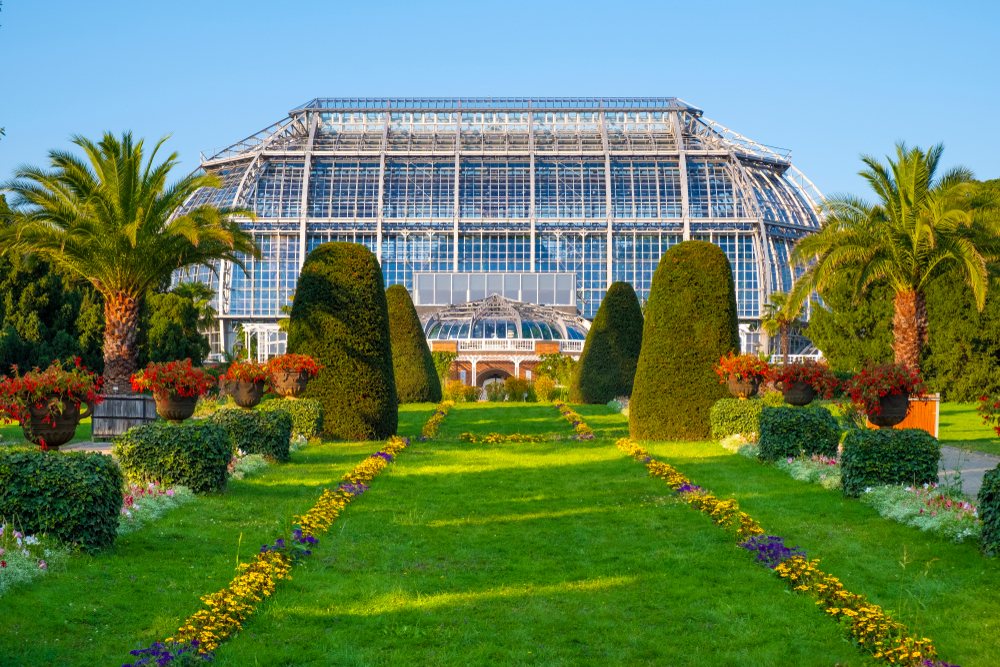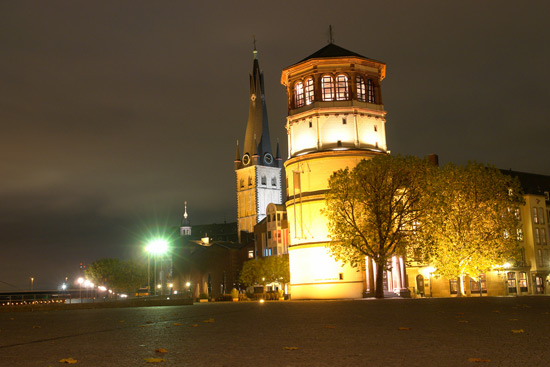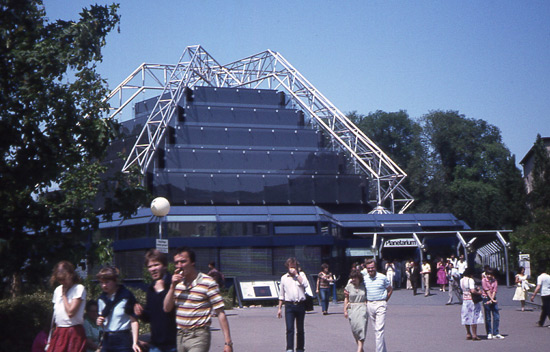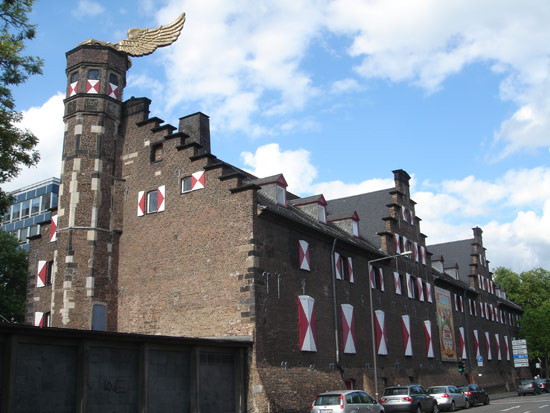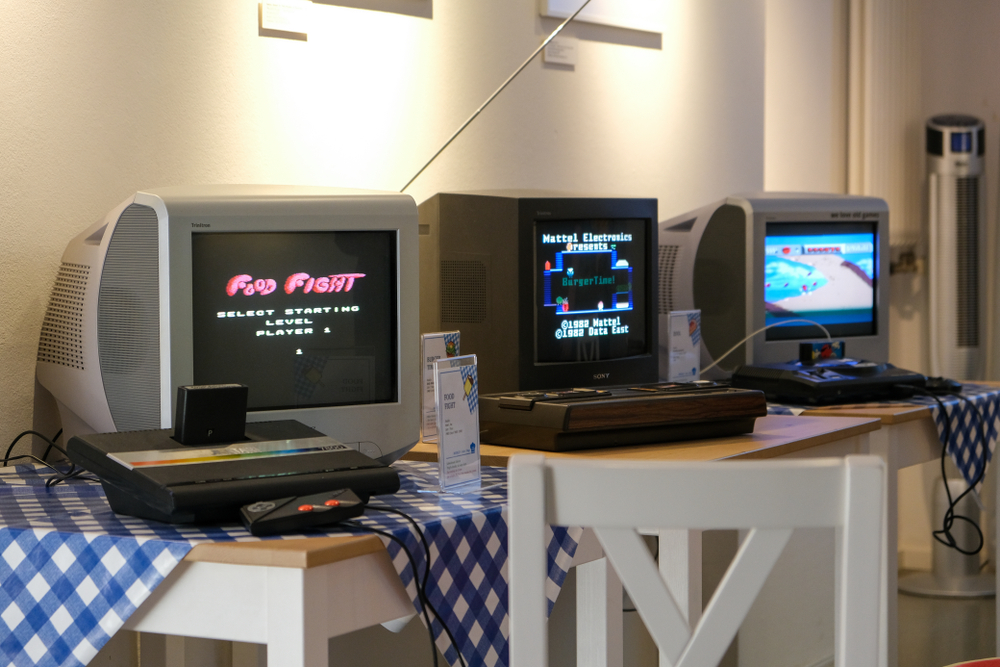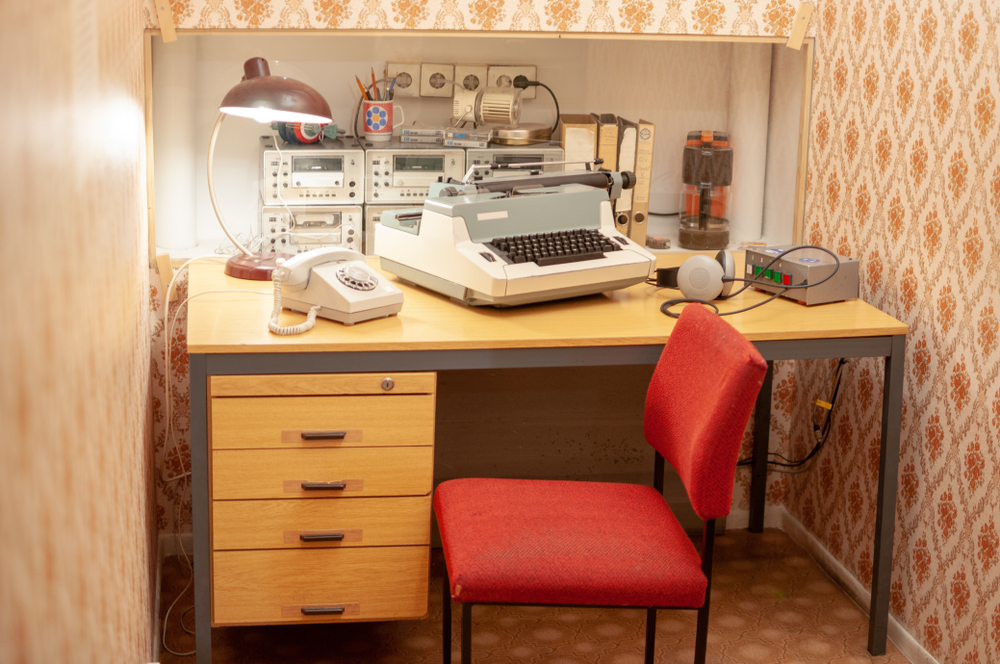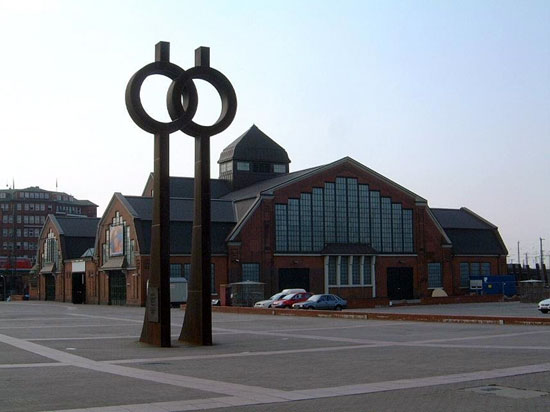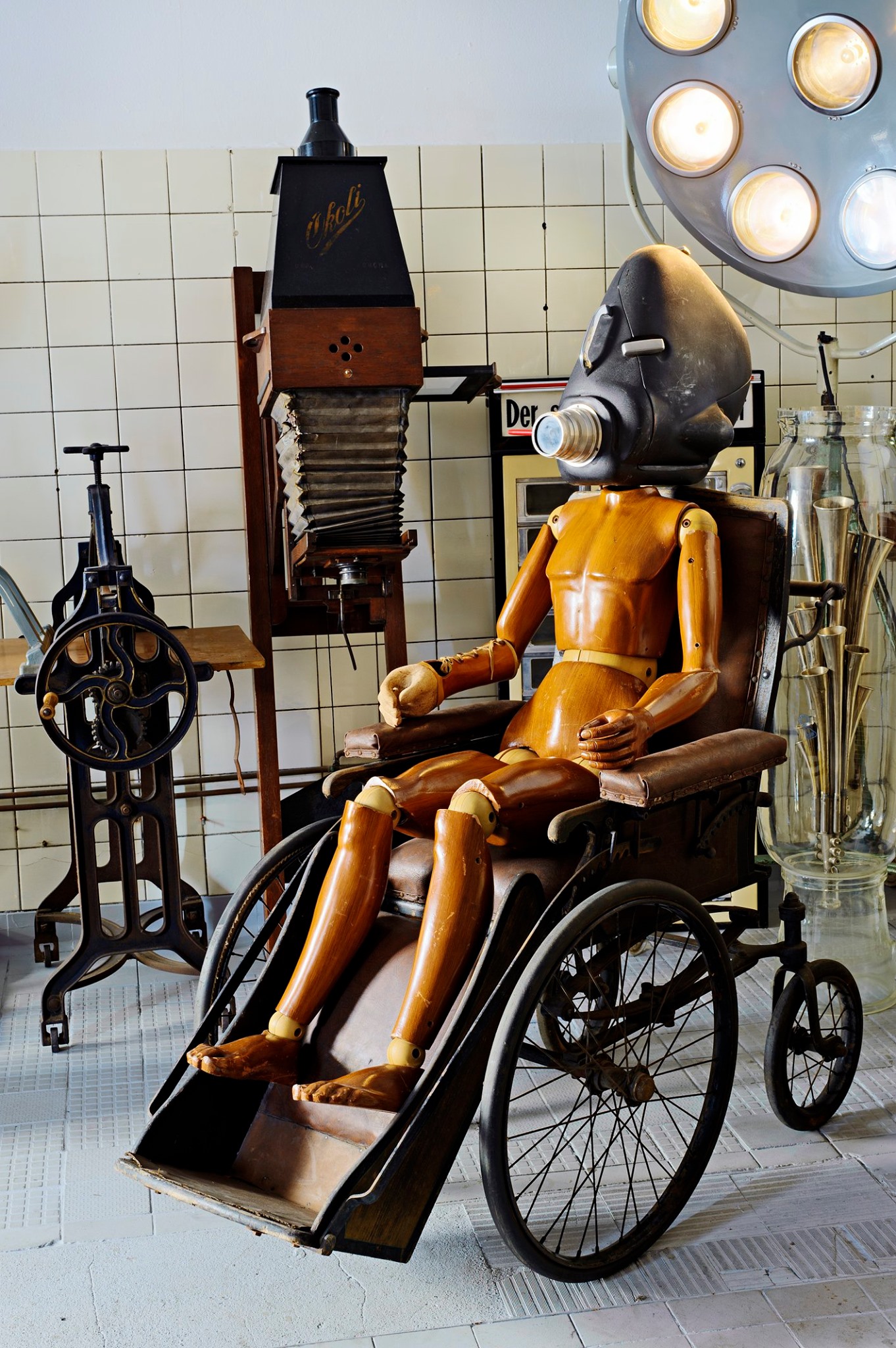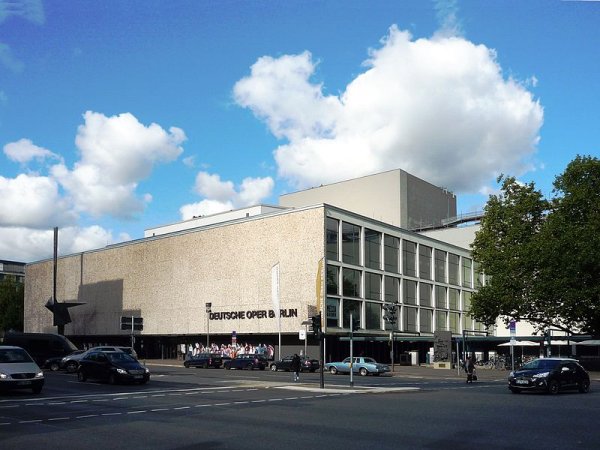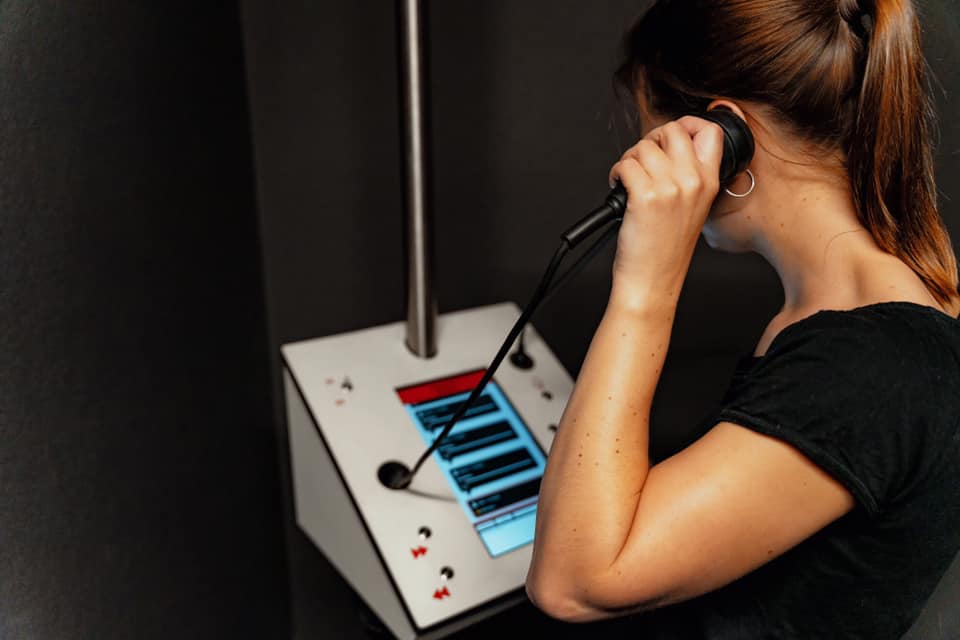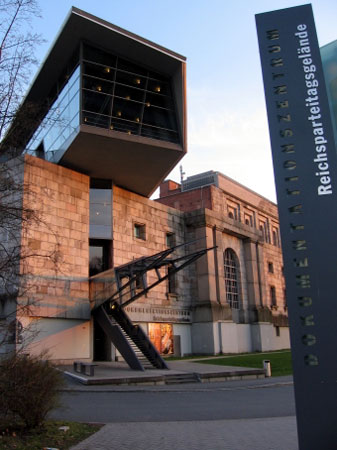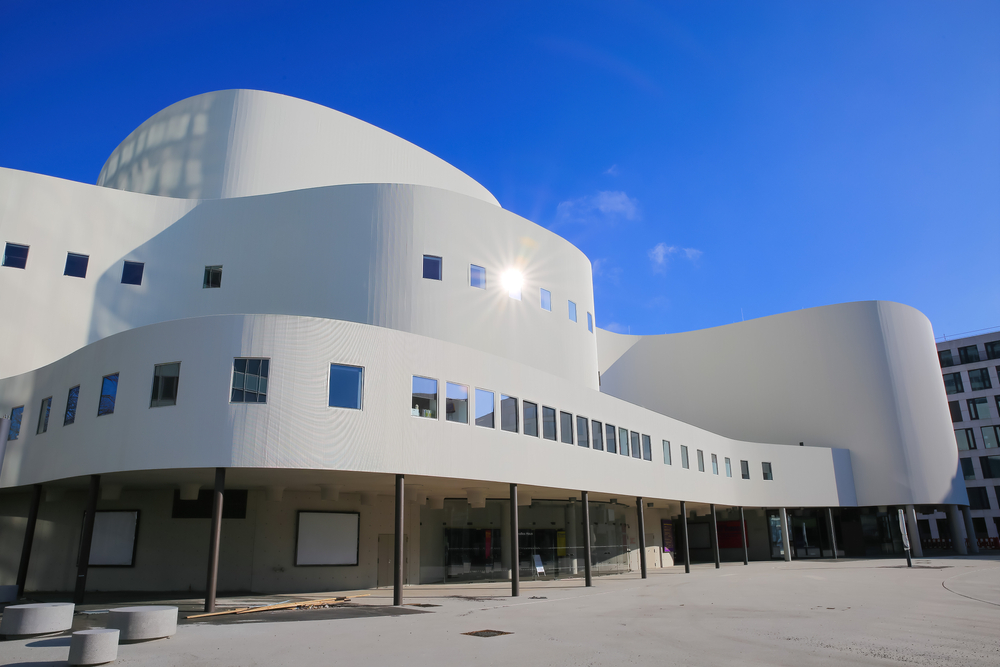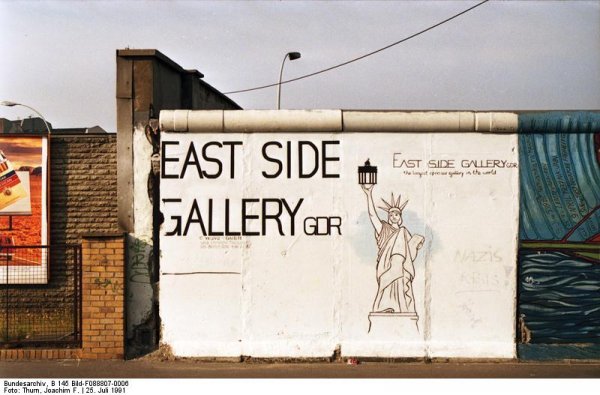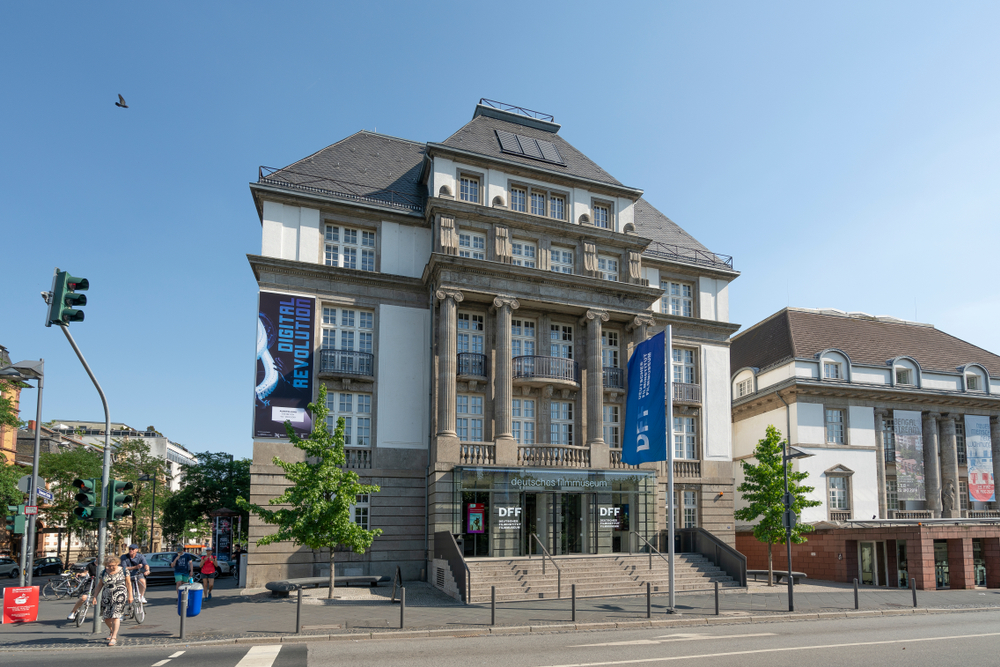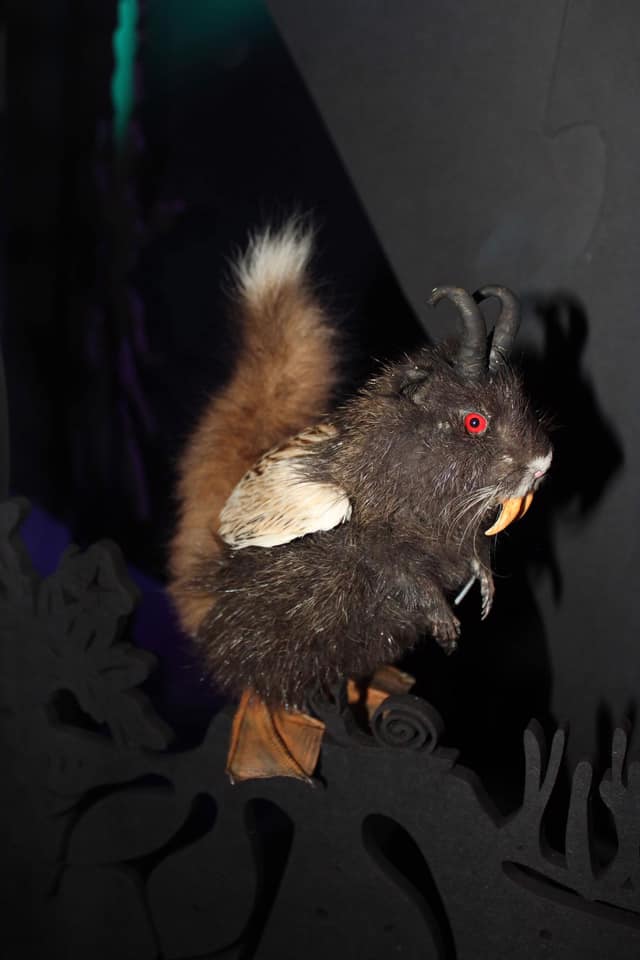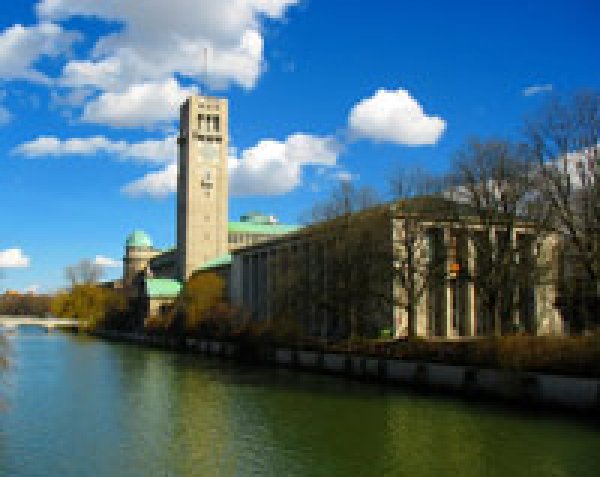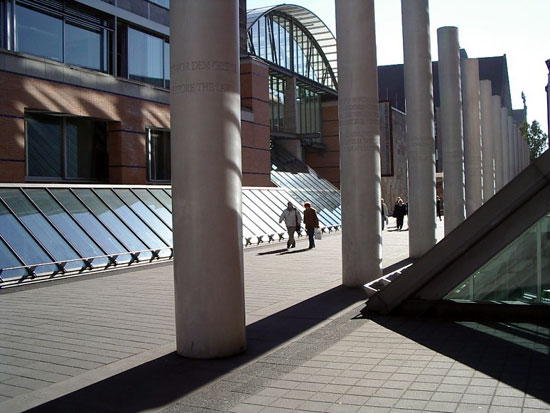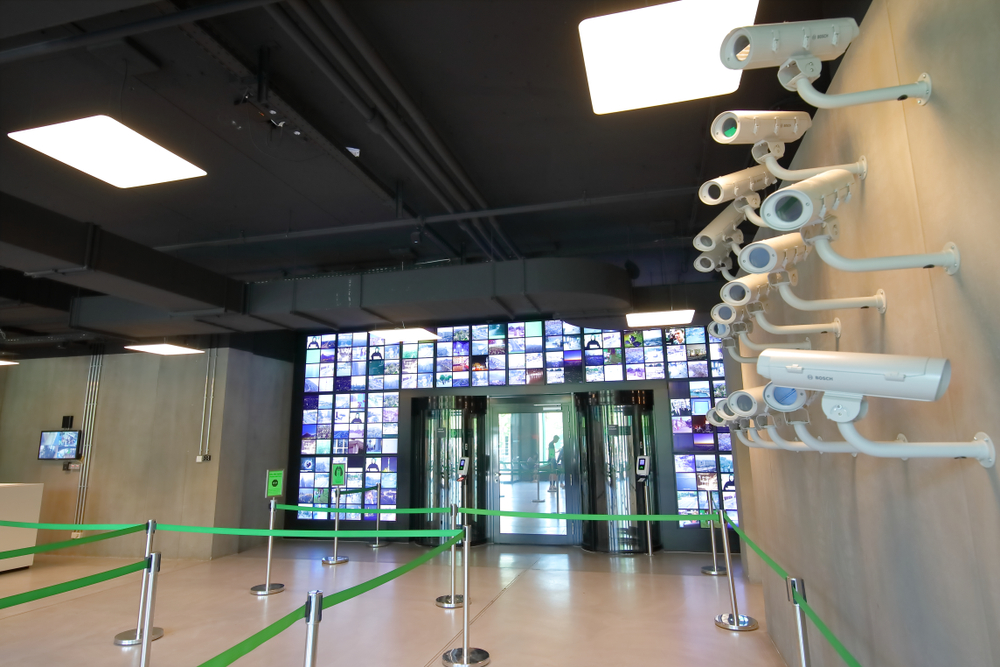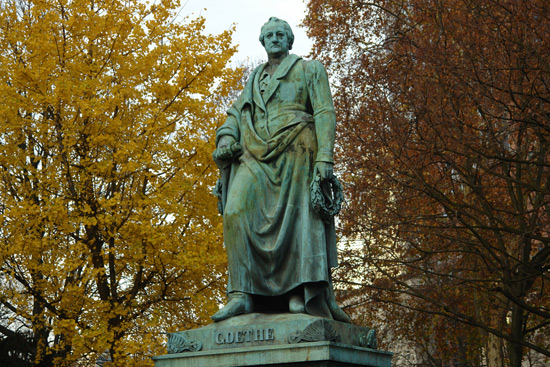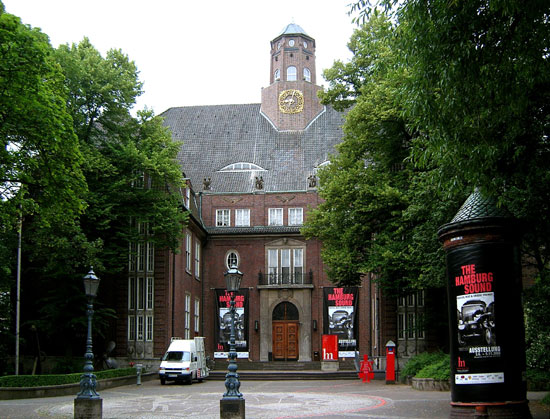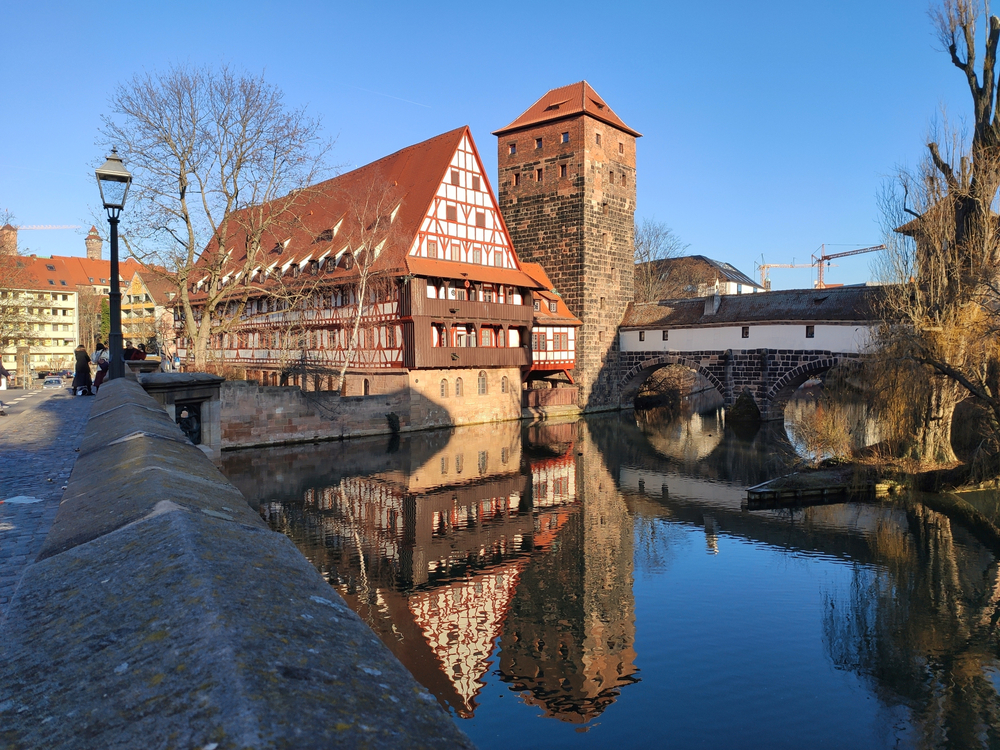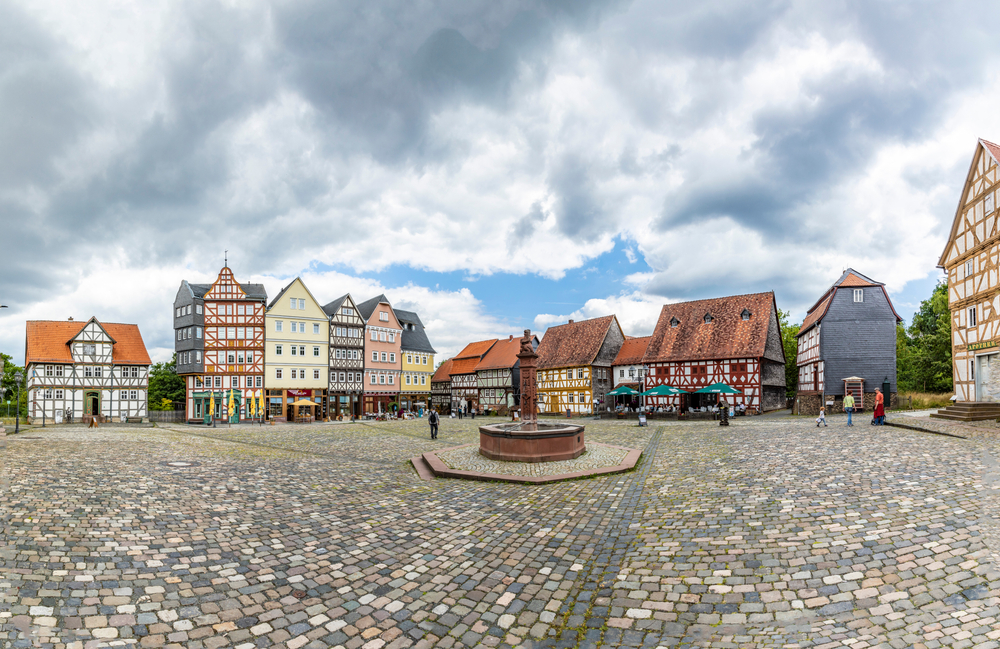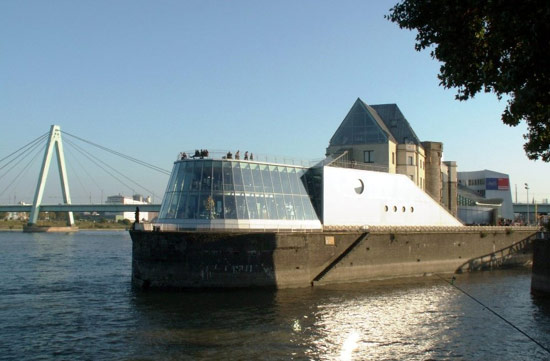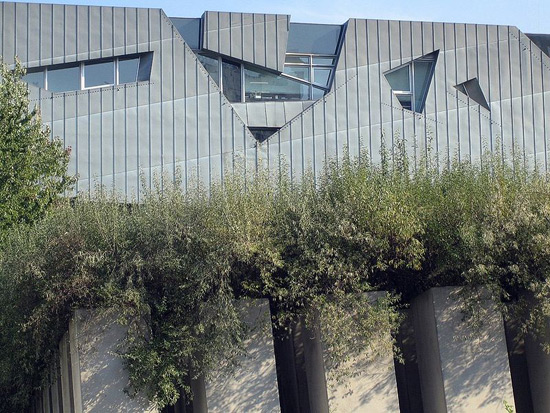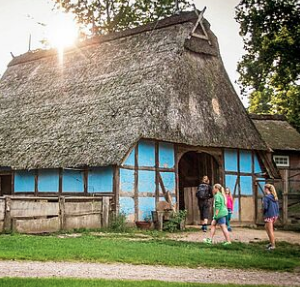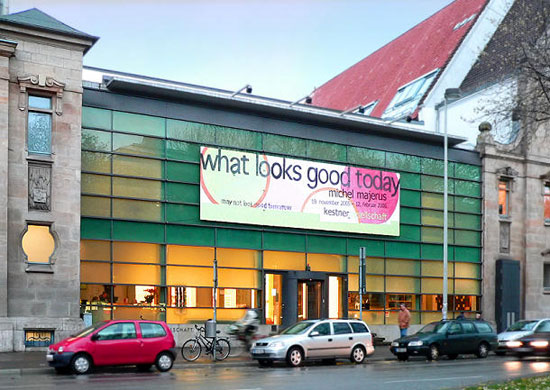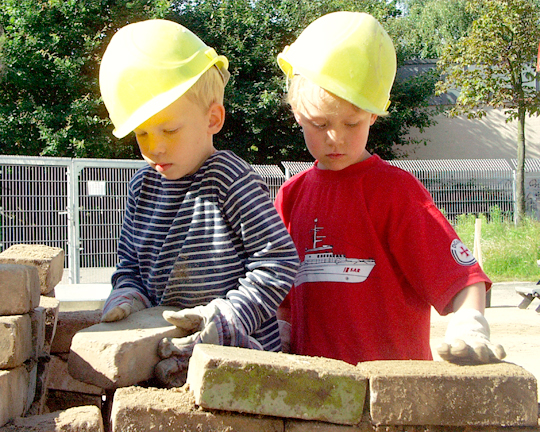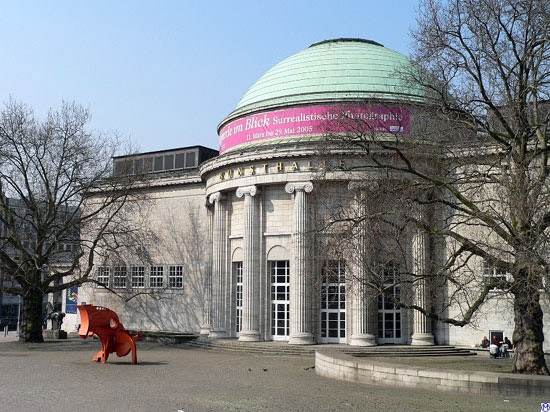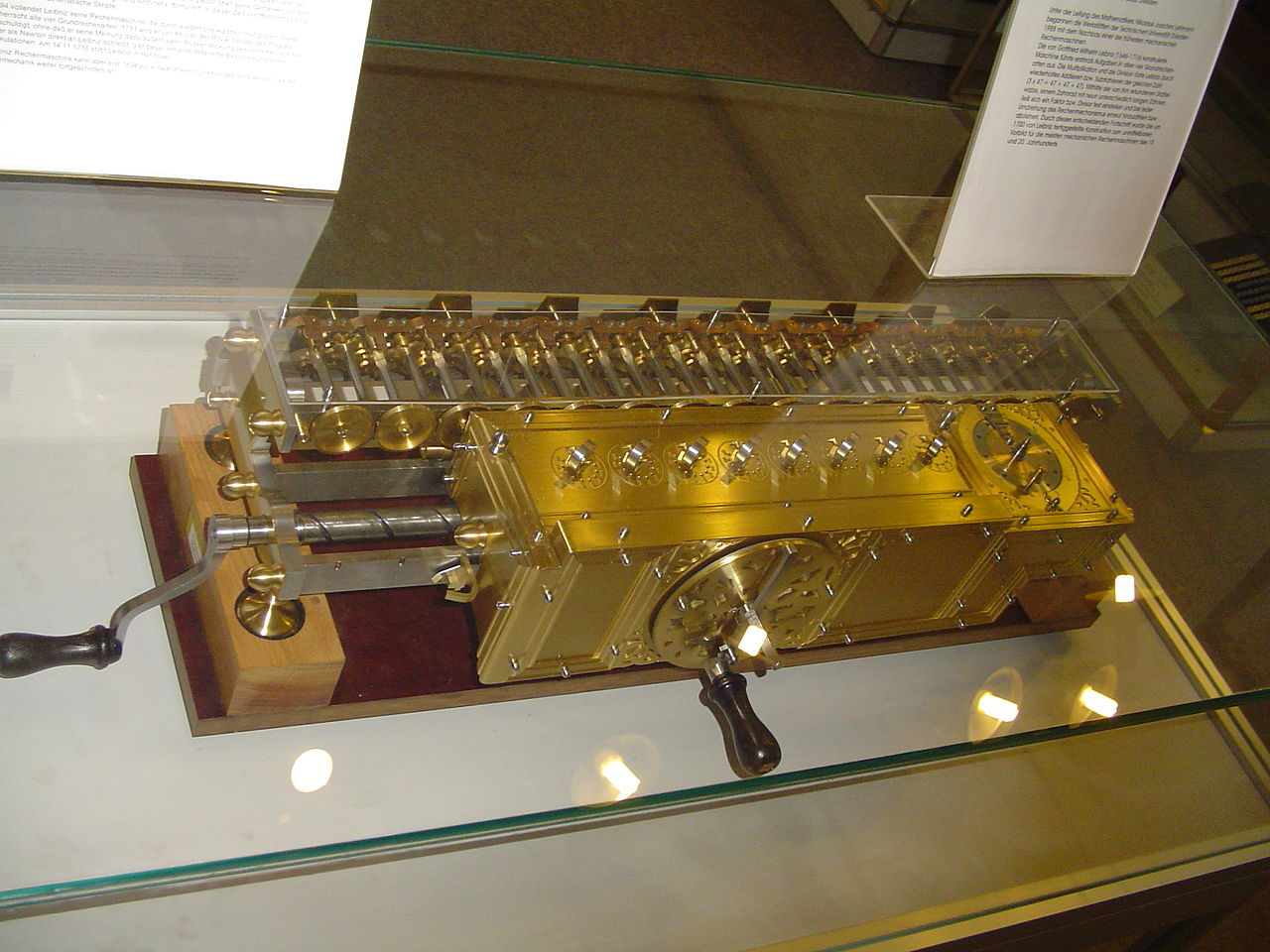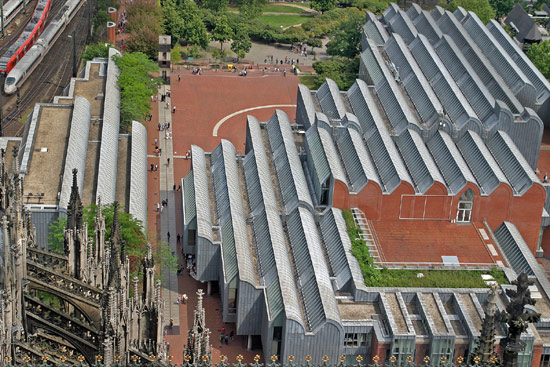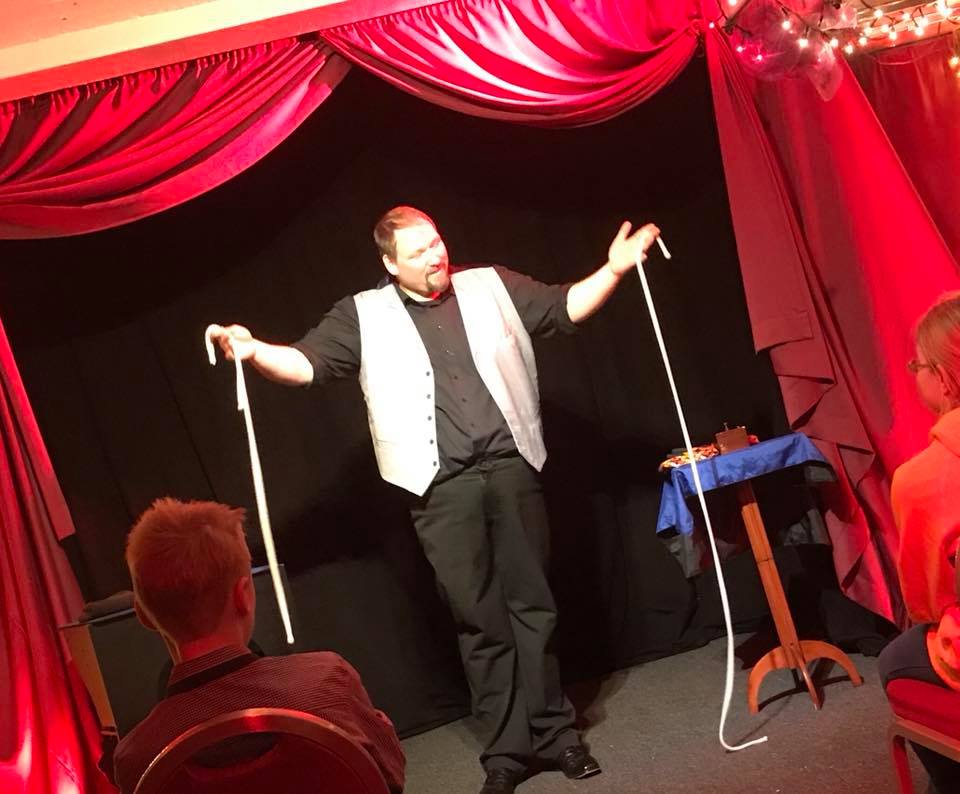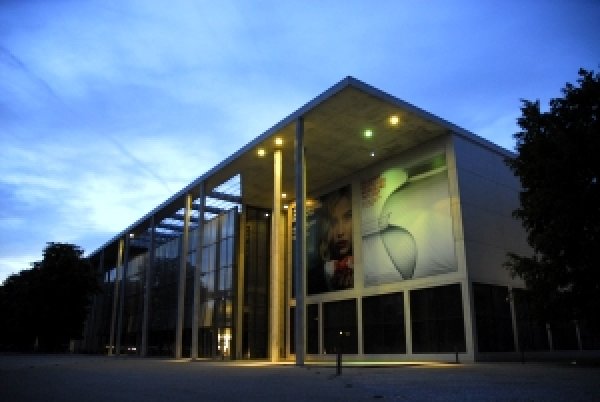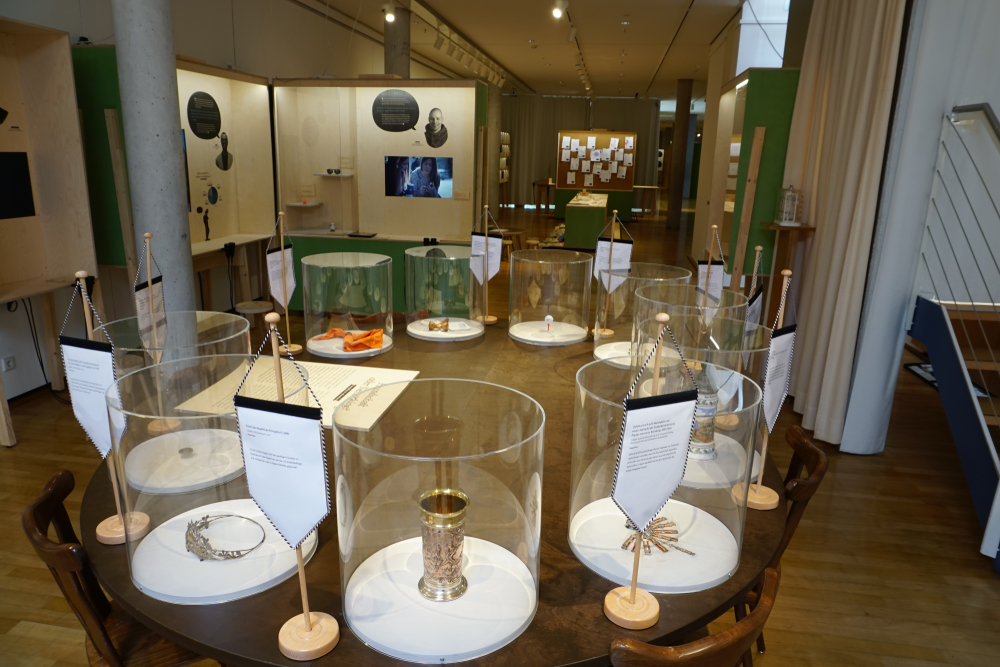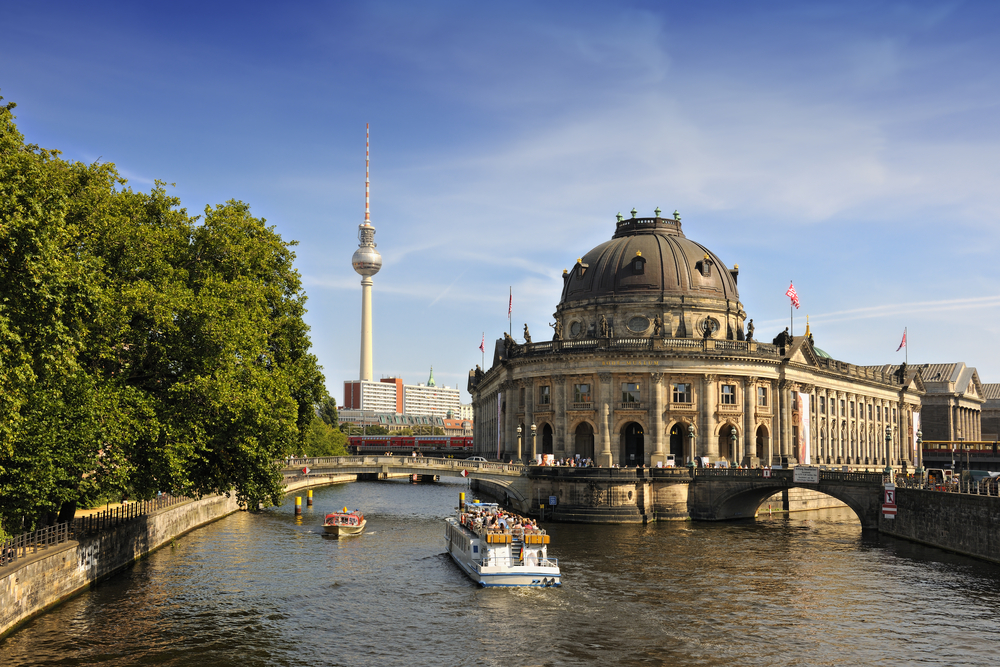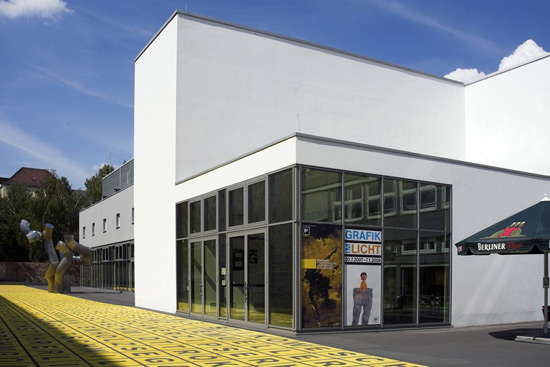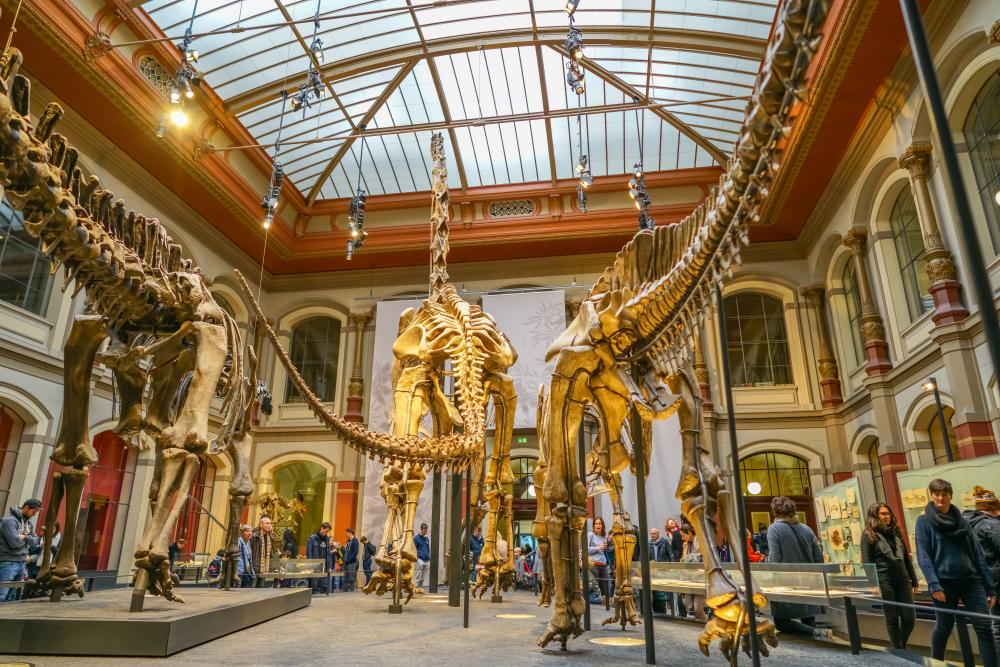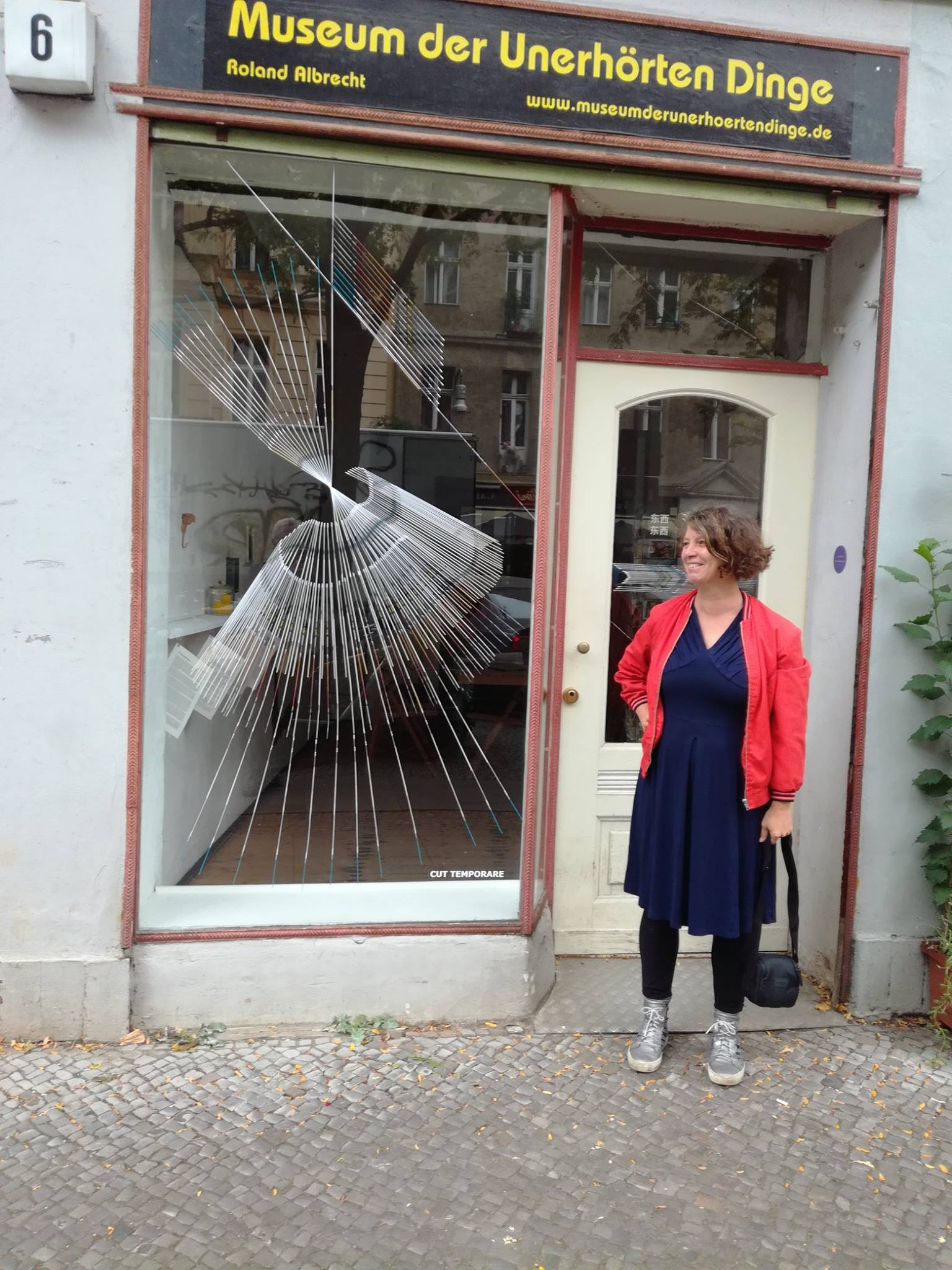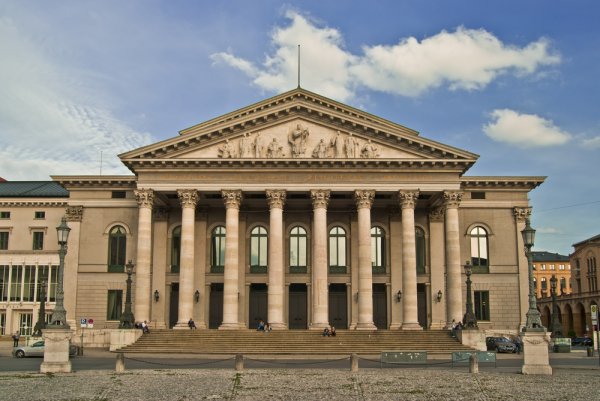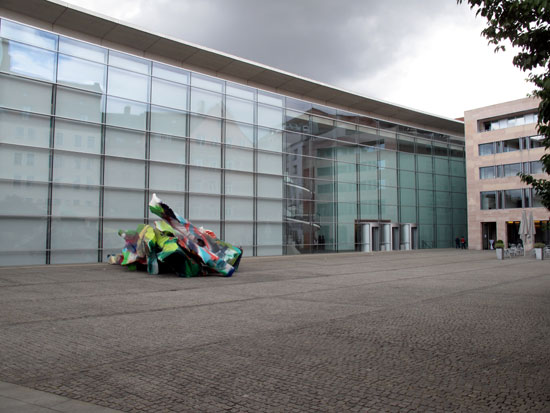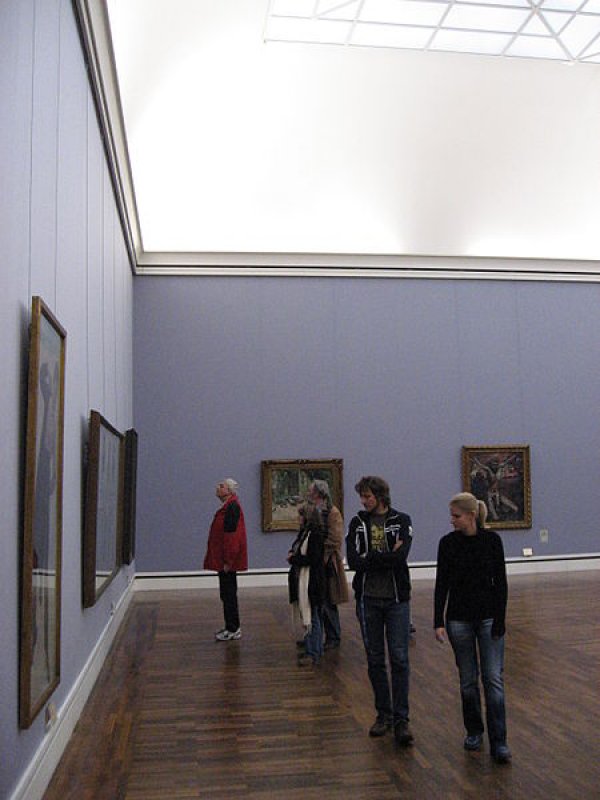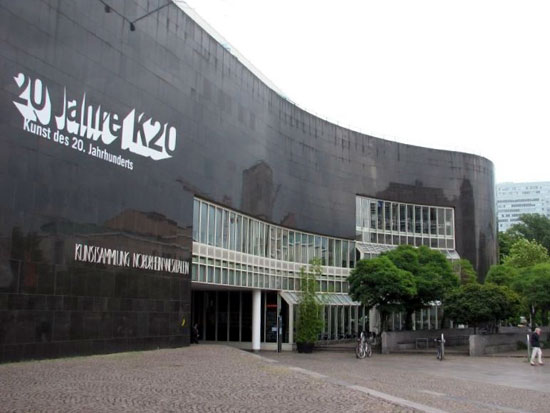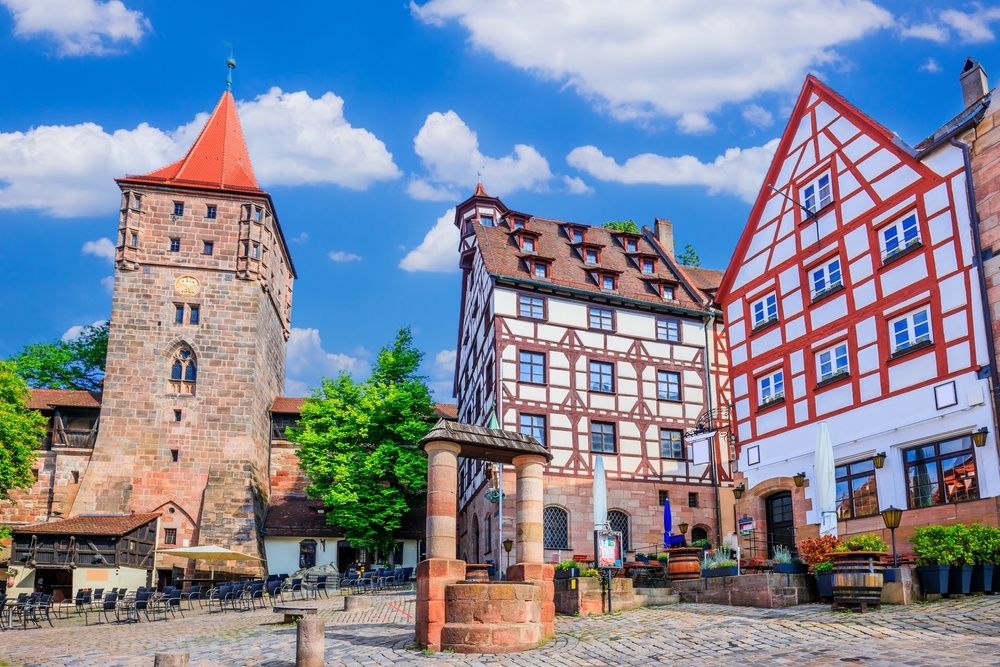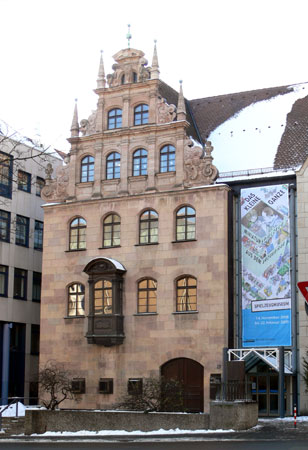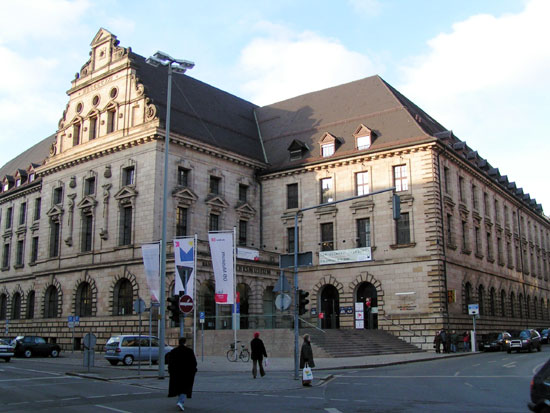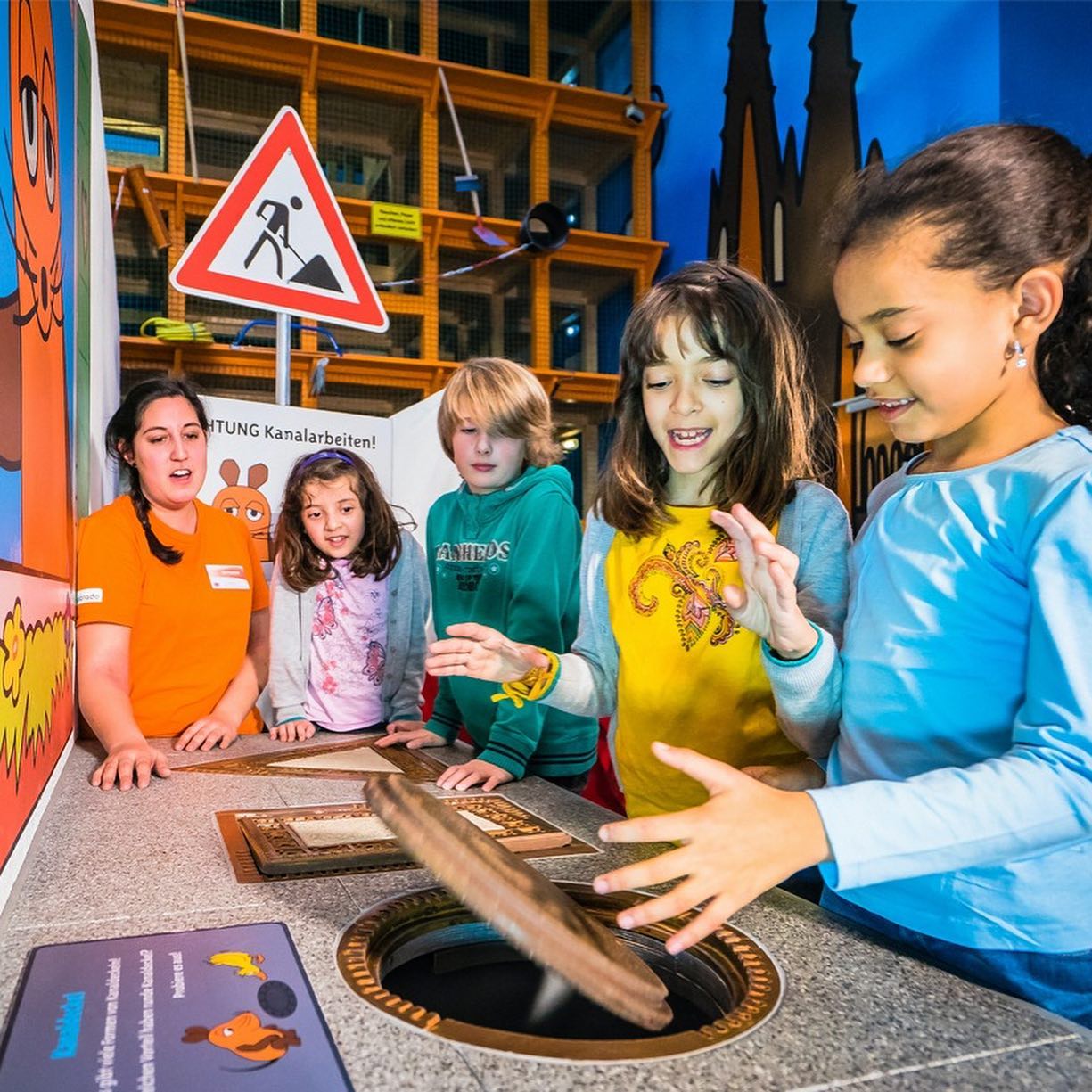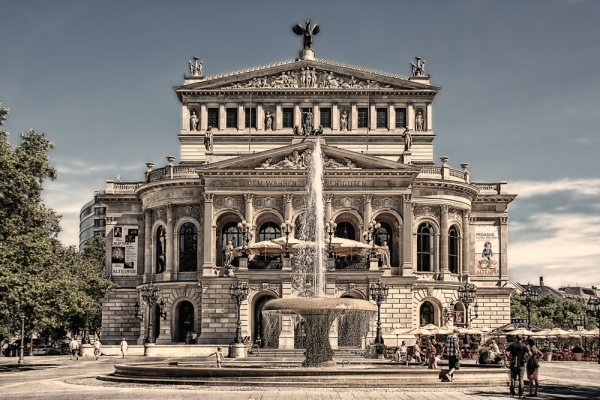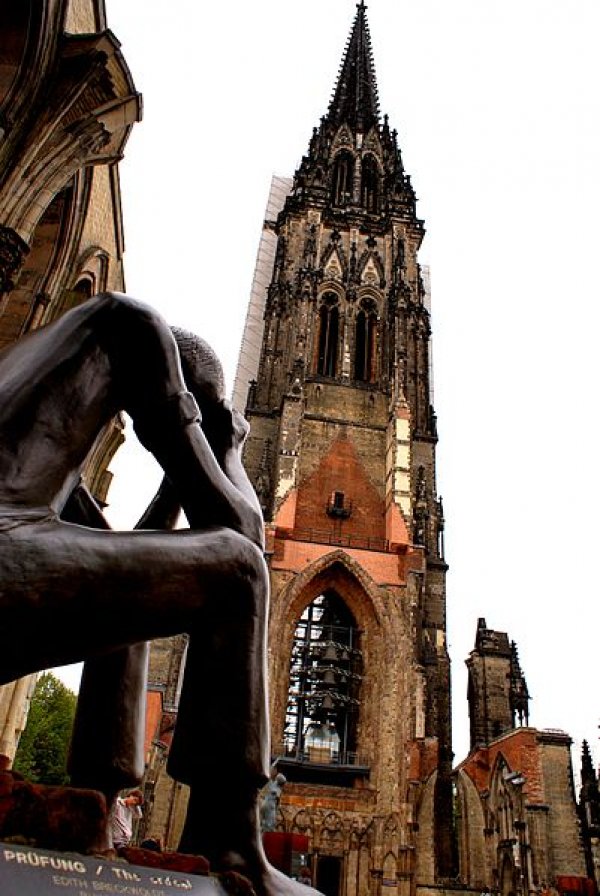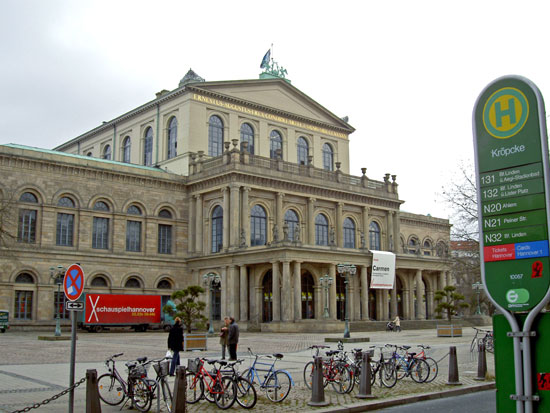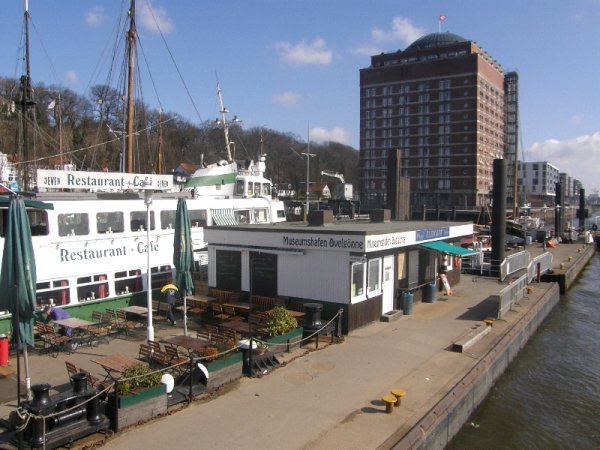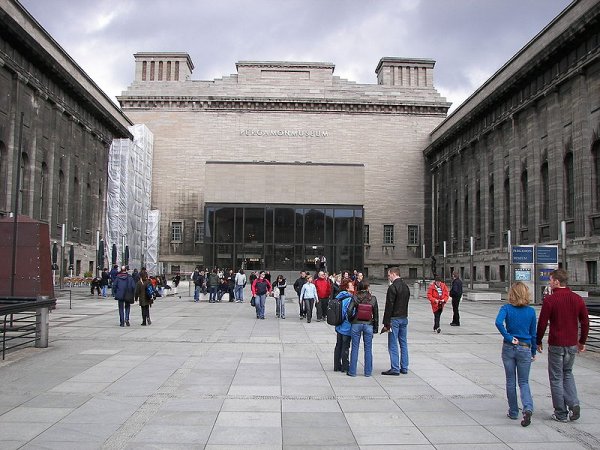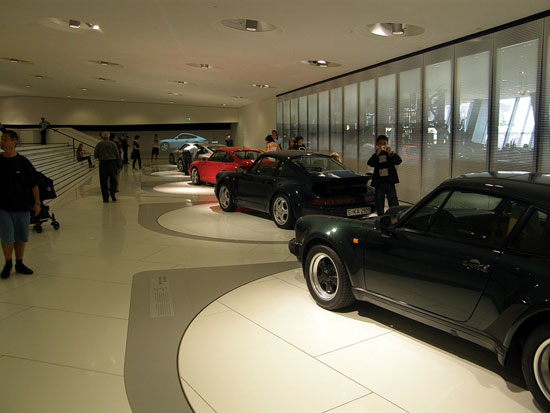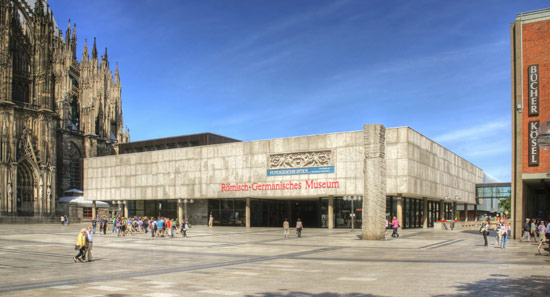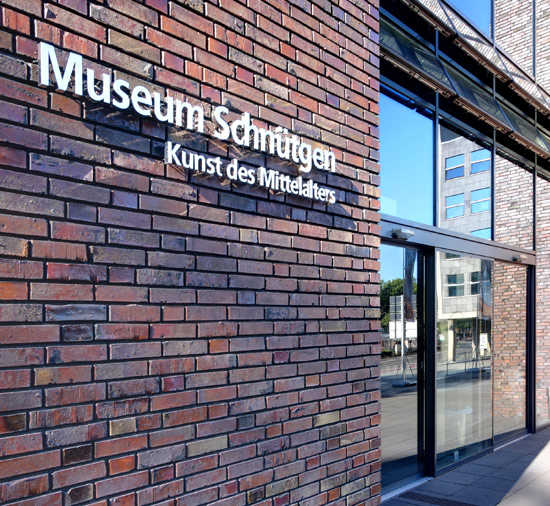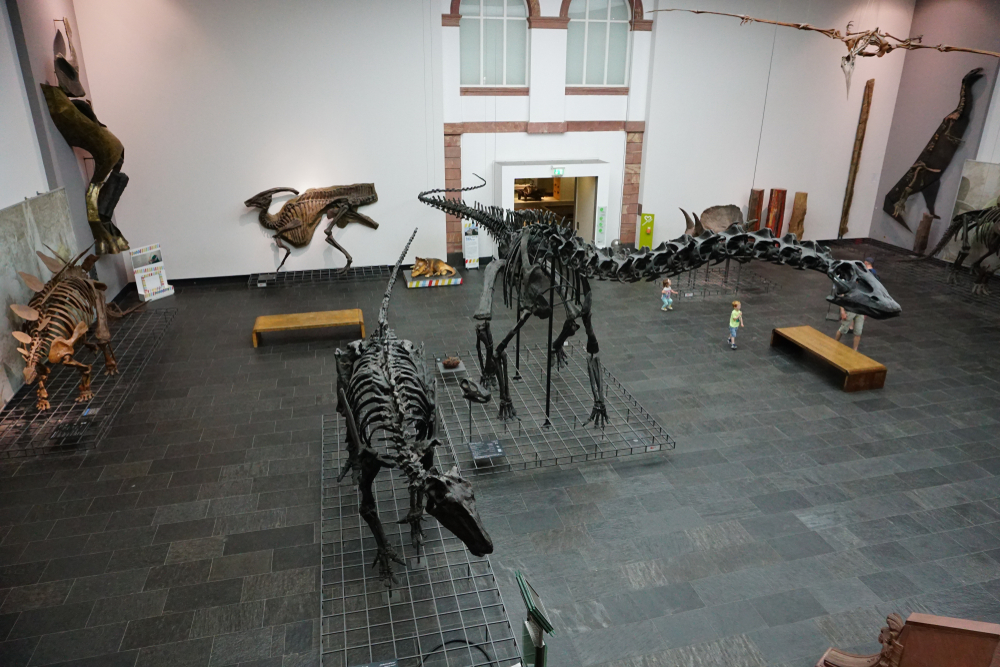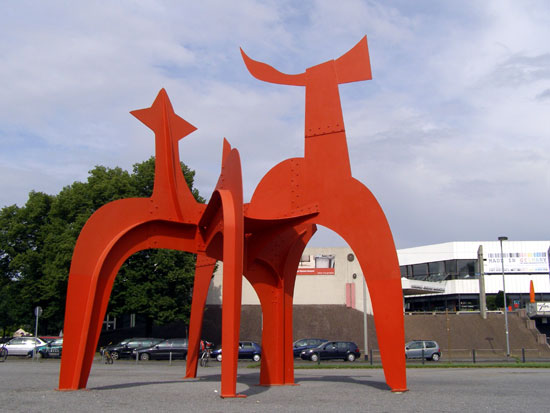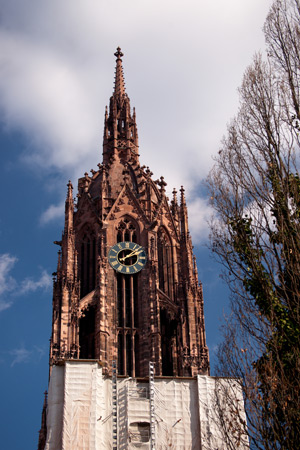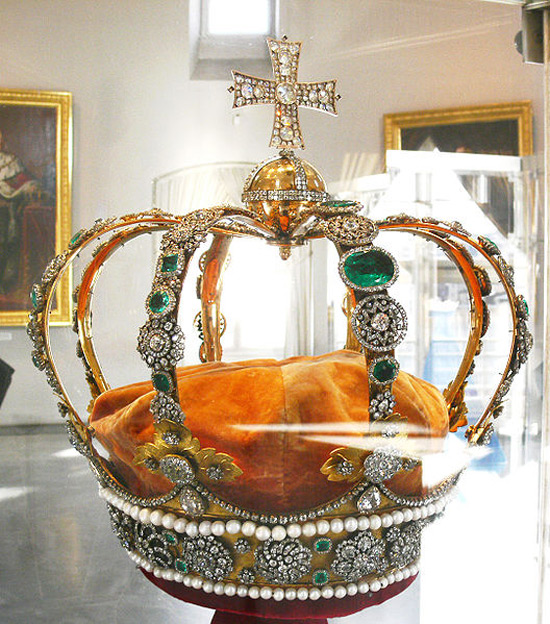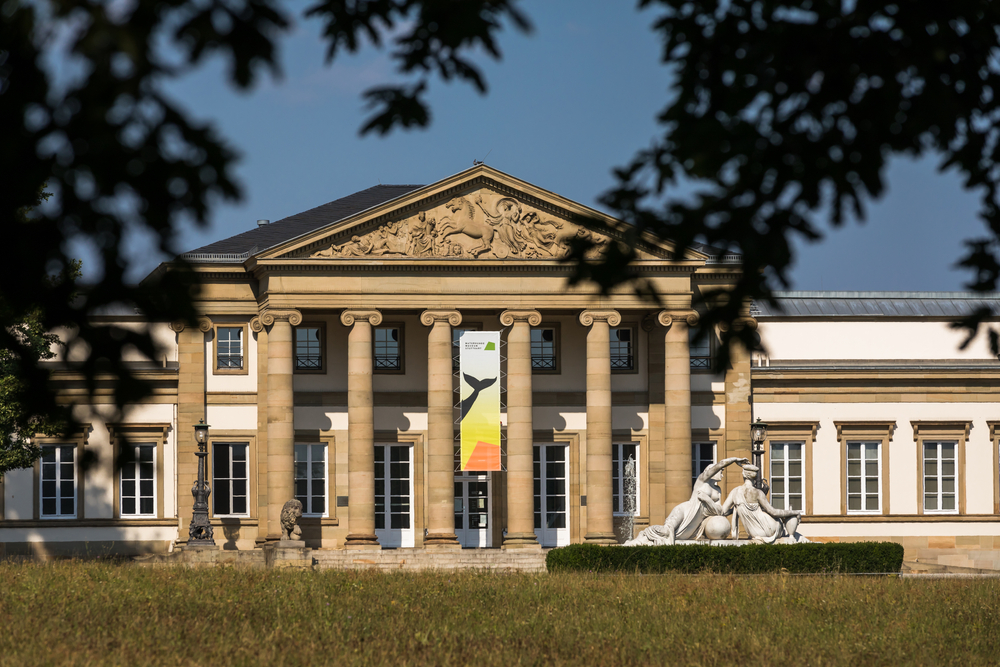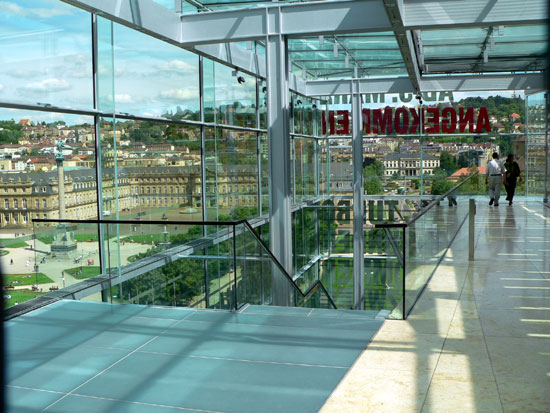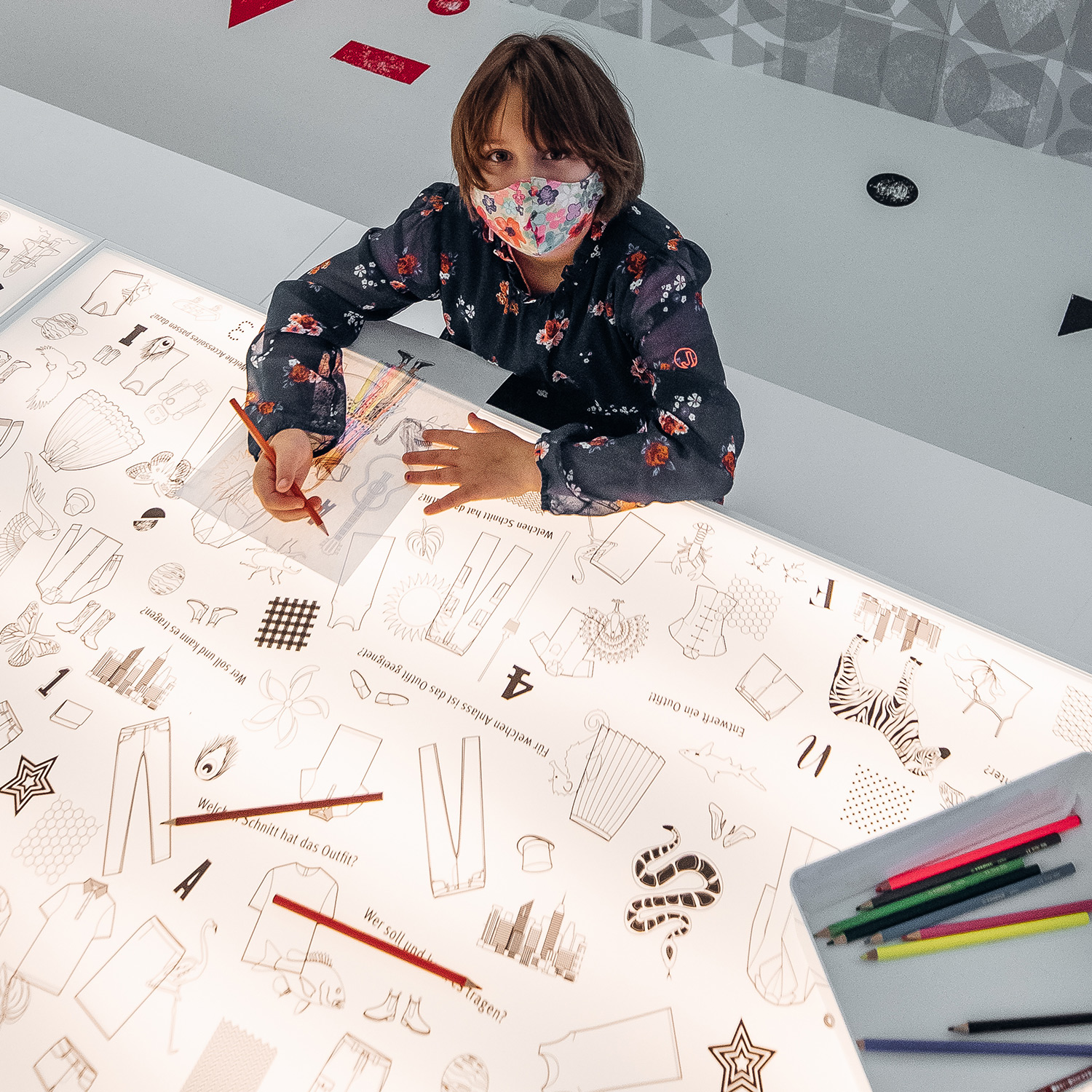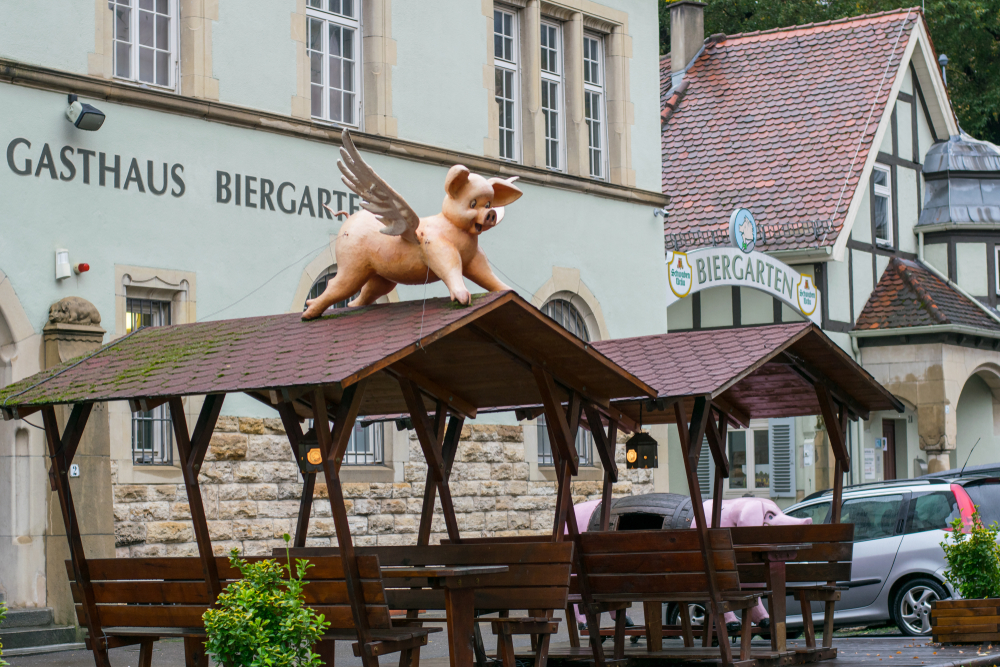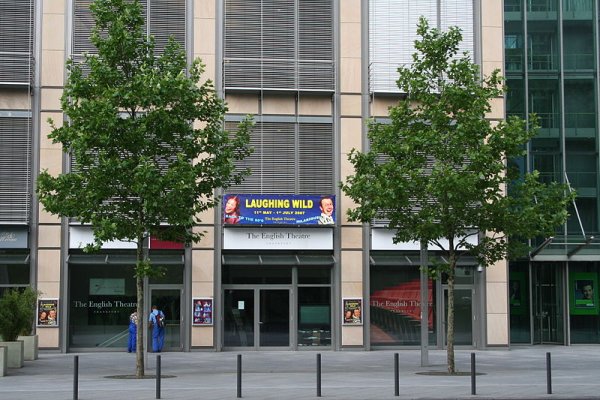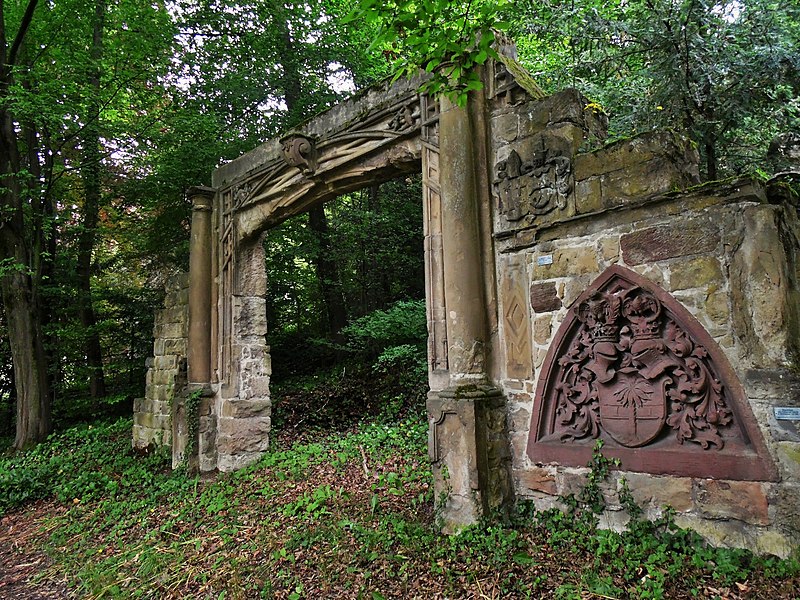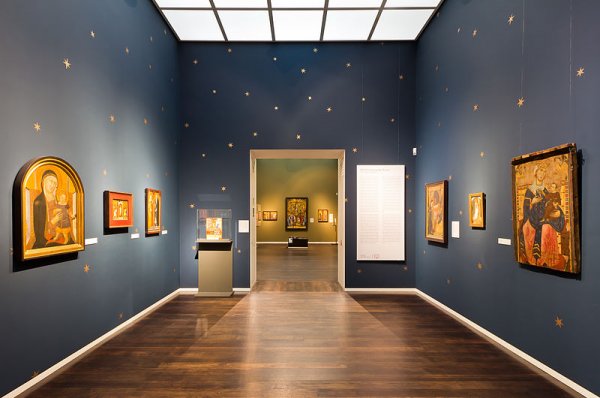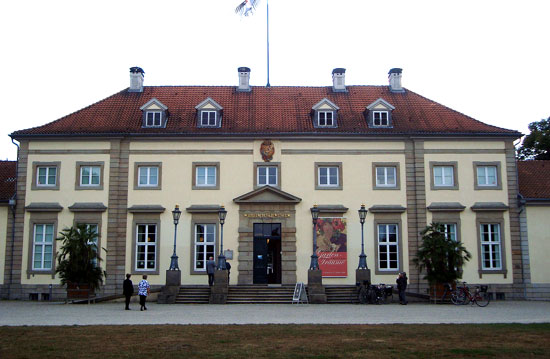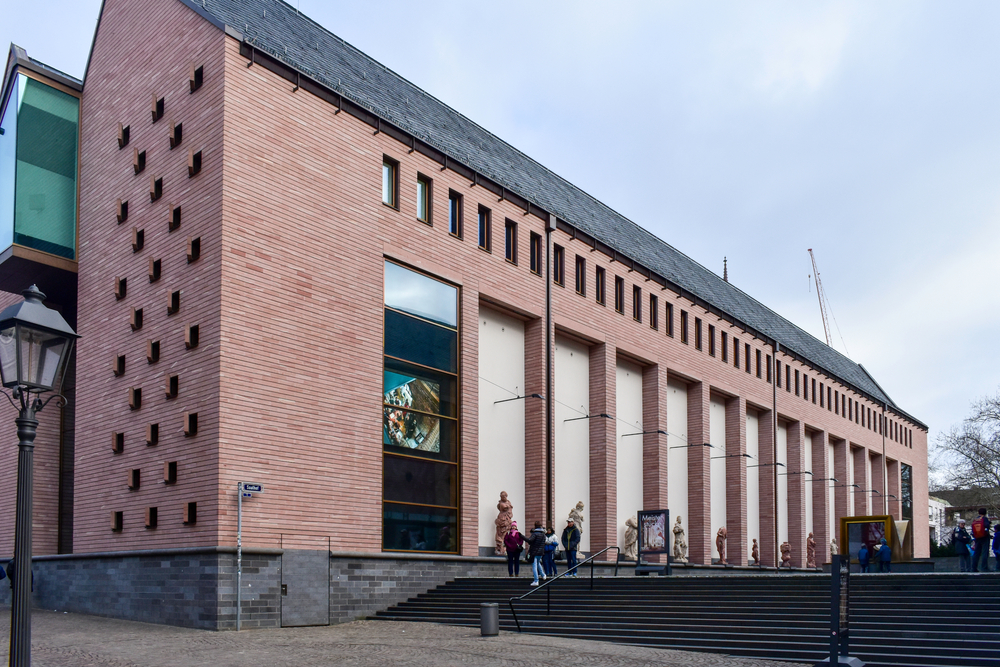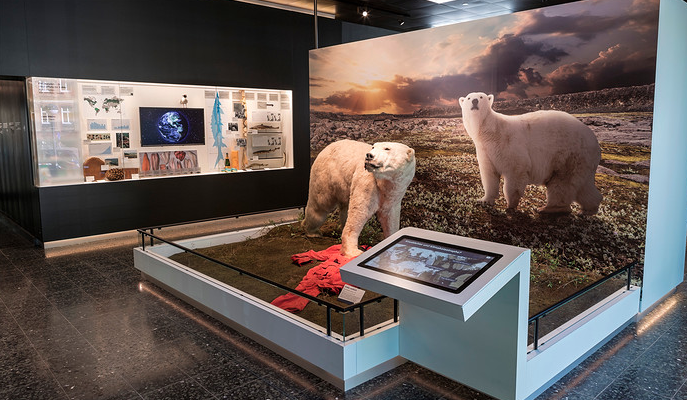Points of Interest
Albrecht Dürer House and Museum
Albrecht-Dürer-Straße 39
Nuremberg, Germany
The son of a Nuremberg goldsmith, Albrecht Dürer went on to become one of the key figures in the Renaissance. Apprenticed at 15 to a master artist, he traveled widely across Western Europe, later incorporating what he'd learned in the Netherlands and Italy into his paintings, prints, and engravings. Dürer's detailed, clearly observed works foreshadowed more natural styles prevalent across Europe for the next few centuries. In his own lifetime, he was perhaps Germany's most significant artist. Visitors to his 15th-century townhouse can take an audio tour provided by Agnes, the artist's wife, which reveals the more domestic concerns of his household (there's a tour on Saturdays in which an actress in period costume leads the tour). Also on display in the half-timbered house are the tools that Dürer used to create copper plate engravings.
Altstadt Theater
Theater der Altstadt Rotebuhlplatz 89
Stuttgart, Germany
Stuttgart's finest contemporary theater puts on productions such as Faust I, The Open Couple, and The Happy Prince in small, intimate surroundings. A large bust of the philosopher Arthur Schopenhauer crowns the façade of this 1958 building. The emphasis is on dialogue with the audience, and a number of avant-garde performances take this to the level of audience interaction. The theater also plays host to works written entirely in the state language, such as Weiberwirtschaft. Hot and cold drinks as well as snacks can be purchased in the foyer, where you are also likely to meet Stuttgart's bohemian set on an edifying night out.
Aquazoo Löbbecke Museum
Kaiserswerther Straße 380
40474 Dusselfdorf, Germany
The Aquazoo Löbbecke Museum is a cultural and scientific institution that represents an inseparable link between zoo, aquarium, and natural history museum. In a unique synergy of living animals, vivid exhibits, and interactive media, it enables understanding the origin, evolution and diversity of animals and plants. On a tour of the themed rooms, you follow the evolution of living beings: from the emergence of life in water, the spread of organisms in the sea, the conquest of freshwater and the colonization of all habitats on land. Over 5,000 animals from more than 500 species, more than 1400 fascinating museum objects and interactive elements and media are waiting to be discovered.
– Information provided by Aquazoo Löbbecke Museum
Arts and Crafts Museum
Museum für Kunst und Gewerbe Steintorplatz 1
Hamburg, Germany
The Museum für Kunst und Gewerbe (Museum for Arts and Crafts), situated just south of the central train station, is home to an array of exhibits, from art nouveau interiors to ornaments to centuries-old scientific instruments. The museum was originally built as a school and museum in 1867. Its founder, Justus Brinckmann, originally intended the school to be a remedy to what he saw as the problem of industrial mass production. He hoped his museum-school would be a bastion of applied arts. As an ardent collector of the arts, Brinckmann accumulated a vast gathering of sundry items, including a medieval reliquary chest, baroque home furnishings, and Asian ceramics. This museum is closed on Mondays.
August Kestner Museum
Trammplatz 3
Hannover, Germany
A lifetime's work in Rome and Naples gave German diplomat August Kestner all the opportunities he needed to accumulate this enviable collection of antiquities. Though he died in the Italian capital in 1853, he bequeathed his artworks to his home city. The museum opened in Hannover in 1889, and though the building underwent significant postwar reconstruction, Kestner's sensational ancient artworks are still visible today. The highlights include a substantial Egyptian collection, which features steles, statuettes, sculptures, amulets, and funerary pieces including mummies. Other Mediterranean civilizations are also represented, including Greek pottery, clay lamps, and gems, Roman utensils and sculptures, and Etruscan terra-cotta statuettes. Alongside the museum's coin collection is a wide-ranging section on European design (covering work in metal, wood, enamel, glass, ivory, bronze, and textiles), which spans a millennium of artistic history and is updated with contemporary products every year.
BallinStadt City of Immigrants Museum
BallinStadt-Auswandererwelt Hamburg Veddeler Bogen 2
Hamburg, Germany
Relatively new on the Hamburg museum scene, the BallinStadt museum and family research center is dedicated to the five million Germans and other Europeans that passed through Hamburg on their way to the Americas from 1850 to 1934. This interactive, non-traditional museum takes visitors through a presentation of paper and digital archives filled with old letters, passenger lists, news clips, and other artifacts; it even allows guests to search for loved ones on a digital list of people who emigrated out of Europe during the last two centuries. The museum is named after Albert Ballin, the visionary whose shipping company brought most of these emigrants aboard its ships bound for the New World. Ballin actually constructed a departure "city" at the port in 1907 to temporarily quarantine and house these outbound passengers. The museum offers a glimpse into the lives of emigrants including the reasons they chose to leave, their experiences in Ballin's departure "city," their difficult journeys at sea, and their new lives in the Americas.
Bavarian National Museum
Bayerisches Nationalmuseum Prinzregentenstraße 3
Oberschleißheim, Munich, Germany
There is so much to see at Bavarian National Museum that even the toughest critics will find several objects of interest to pass at least a few hours. Founded by King Maximilian II of Bavaria in 1855, it is renowned for both its original building style and collection of German cultural artifacts. The historical collection, arranged in 40 rooms, contains artworks in Romanesque, Gothic, Renaissance, Baroque, Rococo, Classical, and Art Nouveau styles; sculptures from different ages; ivory and gold works; textiles; glass paintings; tapestries; and shrines. Also on display are musical instruments, furniture, oil paintings, sketches, clocks, stoneware, majolica, miniatures, Nymphenburg porcelain, and faience (glazed earthenware), all of which reflect the culture of courtly life. The museum's folklore section has a representative collection of traditional Bavarian furniture, rural pottery, and religious folk items.
Benrath Palace
Schloss Benrath Benrath
Düsseldorf, Germany
In the south of the city lies the late-baroque castle Schloss Benrath, which features not only the Museum für Europäische Gartenkunst (Museum for European Garden Art) but also a spacious park with a mirroring pond, an English landscape park, and a French baroque garden on 60 hectares. Visitors can stroll around among old trees, sculptures, and flower and herb gardens.
Berlin Museum of Medical History
Berliner Medizinhistorisches Museum der Charité Charitéplatz 1
Berlin, Germany
This museum is located at Charité – Universitätsmedizin Berlin, one of the largest university hospitals in Europe. The museum’s permanent exhibition, “On the Trace of Life” provides a path through medical history over the past 300 years. The presentation follows the ever-changing historical view of and into the body, finally arriving at the “recipient” of medicine, the patient, and the possibilities inherent in today’s medicine. The heart of the museum is still the specimen hall, the core of which goes back to the collecting activities of the museum’s founder Rudolf Virchow. Today, there are around 750 pathologic-anatomical wet and dry preparations on display in this area. Various tours are offered in German and English, for a fee.
—Information provided by Berliner Medizinhistorisches Museum der Charité
Berlin Philharmonic
Berliner Philharmoniker Herbert-von-Karajan-Straße 1
Berlin 10785, Germany
One of the world's finest orchestras, hence tickets may be difficult to come by. The orchestra was founded in 1828 and has played a leading role in the musical life of Berlin for close to 120 years. The lineup of guest conductors to have graced its stage is a who's who of classical music: Brahms, Grieg, Mahler, Strauss. The original performance hall was destroyed in 1944, but the new Berlin Philharmonic Hall went up in 1963 at the Kemper-Platz in Tiergarten. Designed by Hans Scharoun, the building is frequently cited as a wonder of modern architecture, with its bold yellow expressionist exterior and an interior that features a unique seating scheme in which spectators are seated around the orchestra in irregularly placed terraces beneath a tented ceiling.
BMW Welt
Am Olympiapark 1
80809 Munich, Germany
Car lovers of every age will enjoy checking out the hot rides, museum, and other attractions at BMW Welt. The massive venue is engaging inside and out, and within the sleek, contemporary building are all things BMW. Guided tours are offered, featuring the wide range of BMW vehicles, from historic models to the fastest and highest-end cars. There are exhibitions all about BMW’s MINI line and motorcycles, as well as Future Forum and other exhibits focusing on cutting-edge technology and innovations that have elevated the BMW brand over the past 100 years. Junior Campus is geared toward children, so have tweens and teens check out its Future Lab where they can design their own vehicle or program a robot. You and the kids will learn more than you ever imagined about what goes into creating these notable German cars. Located next to Olympic Park, BMW Welt also hosts events and has shops as well as places to eat when you need a break from admiring all the sleek and shiny cars.
Botanic Garden and Botanical Museum Berlin
Königin-Luise-Straße 6-8
Berlin, Germany
See the world in one garden at Botanic Garden and Botanical Museum Berlin, a magical place that appeals to all the senses. Relax on the lakeshore, take a walk on picturesque paths—nature is always in season. One of the largest botanic gardens in the world, the 43 hectares (106 acres) encompasses 20,000 plant species. The Great Tropical House is an architectural masterpiece from the Art Nouveau era that includes palm trees, lianas, giant bamboo, and other plants from the Caribbean and Southeast Asia. Special greenhouses feature cactus, orchids, ferns, and bromeliads, while kids of all ages will be fascinated by a house just for carnivorous plants. Outdoors, visitors will find gardens of medicinal plants, a fragrance and touch garden, moss garden, swamp and water garden, and more. A two-level museum includes exhibits on plant and vegetable kingdoms and the tribal history of plants, among others, while the library is an additional attraction. Guided tours are available.
—Information provided by Botanic Garden and Botanical Museum Berlin
Burgplatz
Düsseldorf Germany
The mighty castle of the dukes who ruled Düsseldorf stood at this place. Nowadays, a lonely tower is all that remains. Since the opening of the Rhine embankment tunnel in 1995, Burgplatz—awarded a prize as one of the most beautiful squares of post-war Germany—is again situated directly on the Rhine. The old castle tower houses the Schiffahrt Museum (Shipping Museum), which provides details on 2000 years of navigation on the Rhine.
Carl-Zeiss-Planetarium
Willi-Brandt-Strasse 25 Mittlerer Schlossgarten
Stuttgart, Germany
This world-renowned planetarium features distinctive steppe-like architecture and a truly awesome depiction of the sky at night in all its glory. More than 200,000 people come to Carl-Zeiss-Planetarium every year, making it Germany's most popular planetarium. On top of the shows exploring the planets, stars, and constellations of our solar system, there are courses, lectures, seminars, and exhibitions related to all things astronomical. Make sure you arrive on time, because once a show begins, no one is allowed to enter. Children under age 6 may not attend. Its location in the midst of Mittlerer Schlossgarten makes this a great place for picnicking and relaxing outdoors.
Cologne City History Museum
Zeughausstraße 1-3
Cologne, Germany
For a cultural and historical way into Cologne, this is a good place to start, whether you're interested in Karneval (the annual February festivities) or Kölsch (the city's famous and distinctive beer). Even the location of the museum is laden with heritage-this 17th-century Dutch Renaissance building with its striking red and white shutters was once the city arsenal (Zeughaus). Learn what this riverside city looked like in 1571, touring a huge model of Cologne based on plans by the medieval geographer Mercator. Then compare that with three short films dating from the 1890s (one is Germany's first cinematic footage), which show ordinary life in the city. The museum is particularly strong on showing everyday activities, from manufacturing processes to spiritual practices. Don't forget to look upwards as you leave-the winged car on the roof is a tribute to American industrialist Henry Ford, who set up his German operation in this city in the 1930s.
Computer Game Museum
Computerspiele Museum Karl-Marx-Allee 93A
Berlin, Germany
Journey back in time to a happy youth and into the virtual real world of the future while exploring rarities and curiosities from 60 years of video game development. More than 300 exhibits focus on the history of computer gaming. Embark on an entertaining discovery of gaming through time and up to the 21st century. Explore the world of Homo Ludens Digitalis (man the digital player) with the help of many rare original exhibits, playable classics, and media presentations.
—Information provided by Computerspiele Museum
David Hasselhoff Museum
Circus Hostel
Weinbergsweg 1A
Berlin, Germany
This museum is a tribute to actor and musician David Hasselhoff, located in the basement of the Circus Hostel. Germans love Hasselhoff, perhaps due to the coincidental timing of two events from 1989. That summer, Hasselhoff’s song “Looking for Freedom” topped the German charts for eight weeks, while in November, the Berlin Wall officially came down, eliminating the barrier that divided the city since 1961. The following New Year’s Eve, Hasselhoff performed a concert in front of Brandenburg Gate, near remains of the Wall, said to have been attended by 1 million people. These events all coalesced into an undeniable adulation of Hasselhoff that is conveyed in the small museum. See photos of the concert along with displays devoted to The Hoff’s Knight Rider and Baywatch television series, among other offerings.
DDR Museum
Karl-Liebknecht-Strasse 1
Berlin, Germany
DDR Museum provides a unique visitor experience, making it one of Berlin’s most popular museums. Engage all your senses to enjoy an immersive experience of everyday life in the former East Germany, which was known as the Deutsche Demokratische Republik (DDR). Covering a range of topics based on sound academic research—everyday life, the Berlin Wall, the Stasi, and much more—the exhibition encourages visitors to touch, feel, and interact, so as to gain a fun and rich understanding of the past. Explore all aspects of life behind the Berlin Wall and the workings of the state—the DDR at a glance.
—Information provided by DDR Museum
Deichtorhallen
Deichtorstraße 1–2
Hamburg, Germany
Housed within two market halls of a sprawling warehouse complex built in 1911, the Deichtorhallen is touted as one of the most famous exhibition galleries in the world. Located near the Kontorhausviertel, this expansive 18,000-square-foot museum looks much like an oversized loft. The buildings are bifurcated, with an exhibition hall for contemporary art on one side and a photographic hall on the other. These halls, now adorned with impressive artworks, were once filled with vegetables, flowers, and fruits. With the exception of the House of Photography's collection of F.C. Gundlach's fashion photographs, the exhibits featured at the gallery are constantly changing. In the past, the gallery has shown works by modern masters such as Lichtenstein, Miro, and Warhol. This gallery is closed on Mondays.
Design Panoptikum
Poststraße 7
Berlin, Germany
The website of Design Panoptikum refers to it as a “surreal museum of industrial objects,” which is a tip off to what lies within. The creations are quirky, some spooky, some whimsical, and all made from industrial objects derived from the aviation, medical, and film industries. Some figures have a hybrid human-monster quality, with many lounging on furniture under strangely shaped lamps.
Deutsche Oper Berlin
35 Bismarckstraße Berlin
Berlin 10627, Germany
The Deutche Oper Berlin, designed by architect Fritz Bornemann, opened in 1961 with a production of Mozart's Don Giovanni . In striking contrast to the classic style of the Deutsches Opernhaus, which was destroyed during World War II, Bornemann's concrete facade and sober interior reflects the open, simple elegance of New Berlin architecture. A beautiful, sculptured staircase leads through the ground floor lobby into an impressive foyer with glass panels stretching from the ground level to the top of the building. Thresholds in different hues demarcate spaces. The highly functional auditorium with a capacity of 2,098 seats is notable for its unobstructed view from every seat, excellent acoustics, and precision lighting.
Dialog Museum
An der Hauptwache B-Ebene, Passage 10
Frankfurt, Germany
Gain a greater appreciation for the power of sight within this museum, as it conveys what it’s like to be blind. Visually impaired guides escort visitors through exhibits that are in pitch black, meaning you’ll need to rely on your other senses. Find themed rooms and exhibits including the Soundspace sound installation and Dialogue in the Dark. Get the feeling of what it’s like to cross a road without your eyes to guide you, a seemingly mundane event that is entirely different in the dark.
Documentation Center Nazi Party Rally Grounds
Bayernstraße 110
Nuremberg, Germany
It was filmmaker Leni Riefenstahl who immortalized the Nazi rallies at Nuremberg, but it was Albert Speer whose vision created them. Between 1933 and 1938, the Nazi Party held a series of monster rallies here, sound and light spectaculars in which participants were whipped up into a fervor by Hitler's fiery speeches. Speer used searchlights to create a Lichtdom, a cathedral of light so bright it could be seen from Prague. Though the grand parade ground has crumbled over the last 70 years, this documentation center has breathed new light into a dark history. Since 2001, it has combined an educational function with architectural daring, piercing the concrete walls of the massive Kongresshalle to open up, quite literally, Nuremberg's Nazi past. Visitors can tour the parade grounds and view exhibits on the history.
Düsseldorf Theater
Gustaf-Gründgens-Platz 1
Düsseldorf, Germany
The playhouse is a controversial and expensive addition to the city's architectural and cultural attractions. The façade has drawn ardent praise and bitter criticism alike and in some ways overshadows the excellent shows, opera, and operettas that regularly draw the dignified elite of the city. If you are a fan of the theater, visit this one in Düsseldorf and add your opinions to the many concerning the aesthetics of the building. Whatever your feelings about the structure, the plays will be sure to captivate you long enough to forget the building.
East Side Gallery
Mühlenstraße
Berlin, Germany
The Eastside Gallery consists of 1.3 kilometers (1 mile) of the remaining Berlin Wall in the Kreuzberg-Friederichshain district. It is the longest remaining section of the wall and also considered the world's largest open-air art gallery. The gallery comprises a collection of murals painted by a group of artists from 21 countries who were gathered following Berlin's reunification in 1989. Ten years later, these same artists reunited to touch up their work and cover the graffiti and tourist scrawl that had begun to destroy their important work. Unfortunately this historic expanse has repeatedly been defaced since then, but is still an awe-inspiring monument to peace and freedom.
EXPERIMINTA Science Center
Hamburger Allee 22-24
Frankfurt 60486, Germany
The whole family will have fun with the interactive exhibits at EXPERIMINTA’s more than 130 experiment stations. Focused on MINT (mathematics, computer science, natural sciences, and technology), exhibits include hands-on activities such as getting inside a giant soap bubble and watching miniature solar car races. Visitors can explore the inside of a huge eyeball to understand the physics of human vision, watch a tornado, create and learn about waves, build a bridge, and so much more. The museum’s giant kaleidoscope will show 1,000 versions of yourself and the shadow theater invites movement and expression. Check the website for special events and operating hours.
Fembohaus City Museum
Stadtmuseum Fembohaus Burgstraße 15
Nuremberg, Germany
The Fembohaus, a substantial townhouse owned by a merchant family of Italian extraction, offers visitors a potted history of Nuremberg. See the city's development from Holy Roman Imperial center to Nazi ideological stronghold, from bombsite to boom town. One of the most interesting exhibits is a sound and light scale model of Nuremberg just before World War II. Nine in every ten historic buildings in the center were destroyed by Allied bombing, but it's difficult to visualize that until you see the comparison between how the city looked pre-1945, and how it looked following the massive reconstruction projects of the 1950s. Audio and video guides update the 2D displays, providing information on everything from local craft industries to what people ate. Take time to examine the Fembohaus exterior-its stepped gables, topped by finials, are an excellent example of an architecture that was almost completely eradicated.
Fragrance Museum
Farina Duftmuseum Obenmarspforten 21
50667 Cologne, Germany
Visitors may find a visit to Farina Museum to be a special experience, as this is the oldest fragrance house in the world. Dating to 1709, there are more than 300 years of fragrance history to learn about across the museum’s three floors. Smell some of the vast array of different scents used to make today’s perfumes, learn about their sources, and what goes into the process of making perfume. You’ll also get to smell the original Farina fragrance, a formula that hasn’t changed since 1709. Guided tours, lasting about 45 minutes, are offered every hour on the hour, seven days a week and in several languages. It is recommended that tour tickets are purchased online in advance. An attached shop offers all the Farina fragrances, which make for memorable souvenirs that will be a reminder of this unique Cologne attraction.
German Film Museum
Deutsches Filmmuseum Schaumainkai (Museumsufer) 41
Frankfurt, Germany
The whole family will appreciate just how far movie-making and special effects have come after a visit to this museum. Offering plenty of interesting sights, the German Film Museum includes two permanent exhibits. One covers the period leading up to 19th-century cinematography, offering a chance to put models of flip books through their paces and examine a phenakistiscopes and a Laterna Magica. There is also a camera obscura large enough to walk into that presents images of the Frankfurt skyline and the river Main. The second exhibit explains how a film studio creates films through every stage of the process. There are several hands-on opportunities here, including a model car that puts you in the middle of a car-chase sequence. There also is a cinema, where the program can range from retrospectives to premieres, as well as series and festivals. Check the website for information on these events as well as for operating hours.
German Hunting and Fishing Museum
Deutsches Jagd- und Fischereimuseum Neuhauser Str. 2
80331 Munich, Germany
Housed inside a 13th-century church, Munich’s German Hunting and Fishing Museum showcases a collection of strange and unique mounted animals, some real and some mythical. Taxidermy enthusiasts will be fascinated by the museum’s more than 1,000 mounts. Especially intriguing are the wolpertingers, which are an imaginary creature said to inhabit the Bavarian forests. A European cousin to America’s jackalope, wolpertingers are a mix between birds and mammals, particularly small game such as rabbits, squirrels, and fox. They often have features such as horns, wings, and fangs.
German Museum
Deutsches Museum Museuminsel 1
Munich, Germany
German Museum has an entire floor dedicated to kids, and there are so many interesting things for children to see and do that you shouldn’t miss bringing them along. Located on a small island in the middle of the Isar River, it is one of the world's largest and most important museums of science and technology. There are 17,000 objects displayed, from World War I U-boats to experimental airplanes. Children’s Kingdom (Kinderreich) features several interactive displays that let kids turn day into night, lift water, experience the moon, and more. Little ones can crawl inside a giant guitar to feel the vibrations when someone plucks the strings, and there is a giant fire truck made from LEGO bricks. Adults also will find much to see and marvel over at Deutsches Museum. Children under age 6 are free. Check the website for operating hours.
German Museum of Technology
Deutsches Technikmuseum Trebbiner Strasse 9
Berlin, Germany
Under the motto "touching is allowed" you and the kids can check out airplanes, sensory illusions, spinning houses, and exciting experiments at the German Museum of Technology. The museum features the Science Center Spectrum, together covering 26,500 square meters (285,243 square feet) at a former factory and railway station. Permanent exhibits include those on chemistry, printing technology, railroads, film and photo technology, jewelry production, computer science, and aerospace, among others. The Science Center Spectrum’s world of experiments addresses seeing and perceiving, light and vision, electricity and magnetism, strength and energy, music and listening, and other topics. A café and restaurant are on site.
German National Museum
Germanisches Nationalmuseum Kartäusergasse 1 90402 Nuremberg
Nuremberg, Germany
With a collection that numbers more than a million pieces, this colossal museum (closed Mondays) is probably Germany's finest institution for art and artifacts. Take a millennial journey that encompasses hand axes dug from Stone Age earth, the golden headdress of a Bronze Age priest, a fifth-century Ostrogoth brooch, a metal armband worn by Emperor Barbarossa, and the Renaissance religious work of Lucas Cranach. Founded in 1852, this museum's art collection would please any gallery, particularly the works by German master Albrecht Dürer. Look out for artwork from the old East Germany, which has been integrated into the permanent collection. Amid the venerable religious relics, altarpieces, and manuscripts, the building itself is worthy of inspection. The inner core of the museum was originally a Carthusian monastery, even if the various reception halls and extensions owe more to the 21st than the 14th century.
German Spy Museum
Leipziger Platz 9
Berlin, Germany
Berlin’s German Spy Museum gives a unique insight into the shadowy realm of espionage. State-of-the-art technologies are available to visitors to uncover the sophisticated and sometimes bizarre methods of agents and secret services through multimedia and interactive exhibits. Germany's only spy museum offers a gripping journey through time from the biblical scouts to the present and future in the middle of the capital of spies. Decipher secret codes, pass the laser course, crack your "secure" password, and hack your favorite website!
—Information provided by German Spy Museum
Goethe House and Museum
Goethe-Haus and Goethe-Museum Großer Hirschgraben 23–25
Frankfurt, Germany
World-renowned writer Johann Wolfgang von Goethe was born in this house in 1749 and lived here until 1775, when he gave up his Frankfurt citizenship and moved to Weimar. His parents' house was destroyed by Allied air raids during World War II, but it was reconstructed in the 1950s and offers a detailed look at how the well-to-do lived in 18th-century Germany. Various spaces, including the kitchen, living, and reception rooms, have been decorated with a combination of original and reproduction furniture to provide a sense of the environment in which Goethe grew up. The study upstairs, where he began his writing career has also been refurnished, with his original writing desk a definite highlight. The museum next door has a variety of artworks from the late baroque to the Biedermeier periods, placing Goethe in the art world of his lifetime and offering context on the works of Frankfurt's most famous poet and writer.
Hamburg Museum
Museum für Hamburgische Geschichte Holstenwall 24
Hamburg, Germany
What better a place than the Hamburg Museum to get acquainted with this exciting city? With an immense and inclusive collection of relics, this museum provides an excellent glimpse into Hamburg's history, from its humble beginnings in the 9th century, through its high-highs and low-lows, and on into the present. With large-scale models, rich archives and documents, and open-plan productions, the museum exhibits focus on such local issues as city development, the harbor, the ever-shifting and multifarious Hamburg culture, and daily life in the city throughout history. Another exhibit presents a fascinating look into pirate activity during the Middle Ages on the North Sea, to which the Elbe eventually leads.
Henkerhaus
Trodelmarkt 58
Nuremberg 90403, Germany
A small museum housed inside the residence of a former executioner, Henkerhaus offers a glimpse into the man’s life and occupation. Frank Schmidt served as Nuremberg’s official executioner from 1578 to 1617, during which time he completed 361 executions. Also known as Meister Franz, he kept detailed dairies about the criminals he killed and how he did it. His state-issued home overlooking the Pegnitz River was part of the job’s compensation.
Hessenpark Open-Air Museum
Laubweg 5
Neu-Anspach 61267, Germany
Worth the 30-minute drive from Frankfurt is an engaging 65-hectare (160-acre) attraction called Hessenpark Open-Air Museum. Visitors will experience 400 years of history come to life as they wander among Germany’s traditional half-timbered houses including more than 100 historical buildings. There are areas focused on craft making and demonstrations of farm work, agricultural areas with live animals, and more. Take a break to refuel at one of the restaurants and then let the kids play on the playground before popping into some of the boutique shops. Visit the website for information about tours, special events, and when the market is available.
Historical Museum of Frankfurt
Historisches Museum Frankfurt Sallgasse 19
Frankfurt, Germany
Founded in 1878, the Historical Museum of Frankfort is the city's oldest museum, tracing its history from the first settlement of the early Middle Ages to the present through more than a million relics and works of art (although not all are exhibited simultaneously). One permanent exhibition examines Frankfurt's growth into a city during the medieval period and includes a large, detailed topographical map of the city that should not be missed. Another covers the years from 1866 to 2001, which offers a microcosm of German history as seen through the changes Frankfurt endured, including the period prior to and including World War I; the Weimar Republic years that followed, the rise of National Socialism and the destruction during World War II (another model not to be missed shows what the flattened city looked like in 1945); and the post-war period that included the Cold War and the eventual reunification of Germany.
Imhoff Chocolate Museum
Am Schokoladenmuseum 1
Cologne, Germany
Imhoff Chocolate Museum, a real-life Wonka land, was opened in 1993, although much of its collection nearly ended up on the scrap heap. During an office move in 1975, founder Hans Imhoff, who bought the ailing Stollwerck chocolate factory, stumbled on some boxes filled with bric-a-brac earmarked for the dumpster. He investigated and found 1,600 antique glass photographic plates, examples of old Stollwerck product labels and praline boxes, abandoned chocolate vending machines, and the real prize—a series of letters written by Ludwig Stollwerck, Kaiser Wilhelm, and Thomas Edison. While these discoveries may be most interesting to adults, everyone will be drawn to the Aztec chocolate history, manufacturing process—seen through glass-sided machines—and miniature candy samples. In all, there are nine exhibition areas in the 4,000-square-meter (43,055-square-foot) museum, including a 10-meter-tall (33-foot-tall) tropical greenhouse that shows how cocoa trees are the starting point for what becomes sweet, melty goodness.
Jewish Museum
Lindenstraße 9–14
Berlin 10969, Germany
An impressive complex erected in 2001, the Jüdisches Museum (Jewish Museum) is a collection of structures encompassing the baroque Collegienhouse, the postmodern Libeskin Building, an architectural gem in its own right, and the newest addition, the lovely Glass Courtyard. In recent years the Jewish Museum has become one of Berlin's most-visited points of interest, with guided tours, temporary exhibitions and a diverse line-up of events on offer. The concerts, lectures and workshops regularly held here are centered on Jewish history and culture. The museum's permanent collection includes paintings, photos, family documents, artifacts and other objects related to German-Jewish life throughout the ages beginning in the Middle Ages.
Keiekeberg Open-Air Museum
Am Kiekeberg 1
Rosengarten-Ehestorf, Germany
Plan a day to visit Keiekeberg Open-Air Museum and discover how Germans lived from 1800 to 1965. The museum offers an authentic village setting on 12 hectares (30 acres). Stroll through more than 40 historical buildings and gardens, immerse yourself in the everyday life of our ancestors, and encounter the breeds of farm animals from this time. See houses made of wicker, clay, and stone surrounded by ornamental, herb, and kitchen gardens, some growing old varieties of grain and potatoes. Seasonal events include a historical fair, while the on-site bakery tempts with fresh-baked treats to take home. Find Keiekeberg Open-Air Museum about 30 minutes south of Hamburg.
– Information provided by Keiekeberg Open-Air Museum
Kestner Collection
Kestner Gesellschaft Goseriede 11
Hannover, Germany
The roll call of artists exhibited at this venerable cultural center contains some of the great names of European and American art: Picasso, Renoir, Rodin, Van Gogh, and Miró. Of the 20th century painters and sculptors, the line is just as impressive, including Henry Moore, Roy Lichtenstein, Alberto Giacometti, Hans Arp, Sol LeWitt, Howard Hodgkin, Cy Twombly, Gilbert & George, and Larry Sultan. Not all Germans have flocked to this pantheon of contemporary art, however. In 1936, just 20 years after the gallery was established, the Gestapo closed its doors. But in 1948, the Kestner Gesellschaft reopened, and Hannover's culture vultures returned to tour its 5,000 years of art. It isn't just drawing, painting, and sculpture. There are relics here from ancient Egypt, glassware from Roman times, and antique coins spanning centuries. Look out for the building's renowned Jugendstil (art nouveau) façade, designated a historic monument in 1982.
KL!CK Kindermuseum
Achtern Born 127
22549 Hamburg, Germany
Bring your children to KL!CK Kindermuseum so they can get hands on and have fun while learning too. Along with temporary exhibits and special events are several permanent exhibits that include interactive and engaging options. Kids can learn about the history of money, make their own, and spend it in shops in Money-and good! They can get an understanding for the body, visit a dentist, and measure reaction speeds in Body Meeting Point, while Great-grandmother’s Everyday Life shows how domestic chores were accomplished before modern technology made it all so easy. There’s also Minus 10,000/Stone Age to show how the first settlers lived and Construction Site- Please Enter!
Kunsthalle
Glockengießerwall
Hamburg, Germany
Centrally located near the Alster lakes and main train station, the Kunsthalle art museum presents famous works by 14th-century Hamburgers, 16th- and 17th-century Dutch and Flemish painters, and 19th-century French and German artists. The museum itself is actually composed of three connected buildings. One of these buildings, a postmodern cube-shaped structure, houses the Galerie der Gegenwart (Contemporary Gallery), which features a famous and extensive collection of modern art from around the world. This gallery boasts works by Joseph Beuys, Georg Baseliz, David Hockney, Andy Warhol, and Pablo Picasso. Furthermore, special collections showcase pieces by Monet, Manet, Renoir, Cézanne, Dürer, and other famous painters. The museum is closed on Mondays. Guided tours are available.
Liebniz Calculator
Waterloostrabe 8
30169 Hannover, Germany
A replica of the Liebniz calculator, built by German mathematician and philosopher Gottfried Leibniz between 1692 and 1694, is on display at Munich’s Deutsches Museum. Also known as a staffelwalze (meaning “stepped drum”) or stepped reckoner, this digital mechanical calculator was the first machine that could perform all four arithmetic operations of addition, subtraction, multiplication, and division. The original Liebniz calculator can be seen at the city’s National Library of Lower Saxony.
Lower Saxony State Museum
Willy-Brandt-Allee 5
Hannover, Germany
Although this museum was founded in the 1850s, the neo-Renaissance building dates from the turn of the 20th century. It was built to house the city's growing art collection, and designed by Hubert Stier, the architect also responsible for Hannover's Hauptbahnhof (Train Station). Inside, it's an eclectic mixture of archaeology, art, and animals. On the lowest of the three floors is an aquarium, with a few reptiles thrown in. The middle story deals with anthropology, featuring a life-size Iguanodon dinosaur and the remains of prehistoric man dubbed Roter Franz for his red hair. The cream of Lower Saxony, however, rises to the top, where the art collection is spectacular. Among the highlights are German, Italian, Flemish, French, and Dutch artists, including Lucas Cranach the Elder (with studies of Martin Luther, both alive and dead), Rubens, Tiepolo, Monet, Holbein, and a famous series of four paintings (Morning, Midday, Afternoon, and Evening) by Caspar David Friedrich.
Ludwig Museum
Museum Ludwig Cologne, Germany
This unassuming art museum is based around two collections amassed by Josef Haubrich and Peter Ludwig. Haubrich was a Cologne lawyer who saved a stack of Expressionist works from Nazi degradation, then presented them to the city. Ludwig was an art history student from Mainz who admired not only Haubrich's taste, but also his generosity. Years later, having made a pile selling chocolate, he donated to Cologne his own storied collection, some 350 works including many exceptional pieces of American Expressionism and Russian Constructivism. The Ludwig Museum, a rhythmic brick and glass structure, was built to house the expanded collection and opened its doors to the public in 1986. Pop art aficionados will be drawn to works by Roy Lichtenstein, Robert Rauschenberg, and Claes Oldenburg, while fans of cubism will want to head straight for the Picasso room. Only Paris and Barcelona have larger Picasso collections. Closed Mondays.
MAGICUM Berlin Magic Museum
Große Hamburger Strasse 17
Berlin, Germany
MAGICUM is the world’s first interactive museum of magic and mysticism, located in central Berlin. Be enchanted by magic props from all over the world and testimonies of ancient wisdom. Test your magical powers and discover how to access the realm of intuition and creativity while puzzling and playing games. About 450 exhibits include: Alchemy and Science, Myths and Fairy Tales, Religions and Culture, Magic and Cultures, World of Illusions, and Witches and Witch Hunting, among others. Guided tours, classes, and special events are offered, and the museum includes a shop as well.
—Information provided by MAGICUM Berlin Magic Museum
Mercedes-Benz Museum
Mercedes Straße 100
Stuttgart, Germany
Learn all about Stuttgart's rich automotive history with a visit to this uniquely shaped building, which contains 120 years' worth of technological milestones and daring designs. The highlight must be the Blitzen Benz, which broke the world land speed record in 1911. Other groundbreaking vehicles include the 260D, the first diesel-powered automobile, and the Mercedes Benz 300L coupe, with its distinctive wing-door design. The gorgeous special roadsters and deluxe emperor's cars from the 1930s are also well worth a browse. The Mercedes-Benz past is explored in detail, but the future is not left to the wayside: Special exhibits about the car designs of tomorrow are both entertaining and educational. Activities for kids include sketching their dream car in the Fascination of Technology area, where it takes shape with the help of museum experts. The museum offers birthday packages for a memorable experience, too. Kids 14 and under get in for free.
Modern Art Pinakothek
Pinakothek der Moderne Barerstraße 40
Munich, Germany
The Pinakothek der Moderne exhibits numerous art forms from the 20th and 21st centuries. The modern art museum exhibits art, works on paper, architecture, and design. Temporary exhibits and events reach across cultural domains to give this museum a rather wordly, cosmopolitan feel. The museum has incorporated music, dance, theater, and film into its repertoire of public cultural events. The newest building of the three Pinakotheken, it was opened in 2002.
Museum for Communication Frankfurt
Schaumainkai 53
Frankfurt 60596, Germany
On the banks of the River Main, Museum for Communication Frankfurt provides a fascinating insight into the history of communication. Highlights include the art and communication section and a range of activities offered by the children’s workshop. The museum’s permanent exhibition, Histories of Media, covers 2,500 square meters (26,910 square feet). Visitors can discover a wealth of treasures related to postal and telecommunications history, from the traditional African bush drum to the mail coach and internet. The first floor comprises the forum—an exhibition room for smaller, temporary exhibitions—and activity rooms for the children’s workshop.
—Information provided by Museum for Communication Frankfurt
Museum Island
Museumsinsel 1 Schloßplatz Surrounded by the Spree River Mitte
Berlin 10178, Germany
Museum Island is a complex renowned for its five museums, each one physically oriented to face a different part of the city. The Old Museum (Altes Museum), completed in 1830, displays Frederick William III's Prussian collection of antiques. The New Museum (Neues Museum), completed in 1859, has a collection of Egyptian and prehistoric exhibits. The Old National Gallery (Alte Nationalgalerie), built in 1876, has the entire collection of 19th-century sculptures and paintings of banker Joachim H. Wagener. The Bode Museum, opened in 1904, houses sculpture collections and late Antique and Byzantine art. The Pergamon Museum, completed in 1930, contains reconstructed original-size buildings like the Pergamon Altar, the Ishtar Gate of Babylon, and the market gate of Miletus.
Museum of Contemporary Art
Hamburger Bahnhof Invalidenstraße 50–51
Berlin 10557, Germany
Once a 19th-century train station, in the early 20th century Hamburger Bahnhof was converted to a museum of transport and construction. In 1996 it was reinvented yet again and debuted as an arm of the National Gallery devoted to modern works from 1960 on. Now the museum boasts the city's foremost collection of contemporary art. Its main space and 300-meter-long (985-foot-long.) warehouse annex feature works by all-stars like Warhol, Lichtenstein, Beuys, and Kiefer, and temporary cutting-edge exhibitions. Hamburger Bahnhof is also known for its excellent bookstore, carrying a great selection of art-related titles, and the popular Sarah Weiner café/restaurant.
Museum of Illusions
Museum der Illusionen Mailänder Platz 27
Stuttgart, Germany
Visit the Museum of Illusions in Stuttgart for amazing sensory experiences that will also make you smarter. Nothing is what it looks like and if a picture is worth a thousand words than an illusion hides over a million of them! Be brave and venture into the illusion of the vortex tunnel—it will drive you crazy and make stepping through a rotating cylinder seem like a great challenge. Distort your image in the mirror room, immerse yourself in the infinite space, resist the laws of gravity and size relation, and take selfies in every conceivable position. Have fun with the collection of holograms, taking a close look at every optical illusion. They are such wonderful, playful reminders that our assumptions about the world and how we perceive it are often only a shadow of illusions. Exhibits include Kaleidoscope, The Wrong Room, The Endless Tunnel, The Tricky Stick, Turntables, and The Head on the Serving Plate, to name a few.
—Information provided by Museum der Illusionen
Museum of Natural History
Invalidenstraße 43
Berlin, Germany
The Museum of Natural History in Berlin offers exciting insight into the natural world. Follow the development of life on Earth, and discover how different forms of life evolve. Be astonished by prehistoric animals, birds, and the legendary polar bear Knut. Or look back into the genesis of the universe. One highlight is encountering the world's largest dinosaur skeleton, a colossal 13.27-meter-tall (43.5-foot-tall) Brachiosaurus. Permanent exhibits include World of Dinosaurs, System Earth, Cosmos and Solar System, Evolution in Action, Minerals, Birds and Native Animals, and Highlights of the Preparation Art and Wet Collection. Among the many sights inside the museum is the biodiversity wall, on which 3,000 animal species are preserved.
—Information provided by Visit Berlin
Museum of Unheard of Things
Crellestraße 5–6
Berlin, Germany
Roland Albrecht founded his Museum of Unheard of Things in 1998, and inside are more than 400 things to see, although the objects themselves are not really the point. A varied assortment of items are grouped together by weight and have relationships to each other as conveyed in stories about each exhibit, stories created by Albrecht. It is the power of his imagination that makes the museum an intriguing place to visit, as the objects relate to “unheard of” stories, urban myths, or tall tales. Among them are stories about petrified potatoes, how sacramental wine lost its red color, and a cow-pie worshipping community. Albrecht’s reasoning behind these tales is that people should reexamine their world view and think about the bigger story behind things we take for granted, bringing their imagination to life.
National Theater
Bayerisches Nationaltheater 2 Max-Joseph-Platz
Munich 80539, Germany
The Bavarian State Opera's home base in Munich was commissioned by King Maximilian I of Bavaria and opened in 1818. Karl von Fischer, the designer, used a neo-classic style of architecture. It was damaged by a fire in 1823 and reopened in 1825 to premiere a number of operas by German composers, including Wagner's Tristan und Isolde, Die Meistersinger von Nürnberg, and Das Rheingold, and Richard Strauss' Friedenstag and Capriccio. The 2,100-seat theater was extensively damaged during World War II. Restored and enlarged by architect Gerhard Moritz Graubner, it has seen many world premieres and productions since its reopening in 1963.
Neanderthal Museum
Stiftung Neanderthal Museum Talstraße 300 Mettmann
Düsseldorf, Germany
Most people couldn't tell you where the first Neanderthal remains were found or why the species is called Neanderthal in the first place. These questions and many more are answered by the museum located about 12 kilometers (7.5 mi) outside Düsseldorf, in the valley that gave our first cousin his name. With interactive installments and maps, life-size replicas, an impressive collection of Neanderthal remains and tools, and a superb story told by experienced guides, the museum provides the type of experience that dazzles children and keeps adults hooked. The museum is easily reached by car, public transportation, or booking through most travel agencies in the city.
New Museum for Art and Design
Luitpoldstraße 5
Nuremberg, Germany
Since it was opened in 2000, this cultural space has brought light and life into Nuremberg's Old Town. Not only does its ultra-modern design by German architect Volker Staab provide a dynamic contrast with the historic buildings, its slab of glass wall provides a series of interesting views during the daytime, and reflections at night onto the Klarissenplatz. The post-1960 collection is divided into sections for designers and artists, so visitors could choose from spaces exhibiting pieces by international interior designers, or works by Joseph Beuys and Gerhard Richter (two giants of the German 20th-century art world who both taught at the Kunstakademie in Düsseldorf), or foreign artists including American Richard Artschwager, Britons Julian Opie and Tony Cragg, or Czech Zdenek Sýkora.
New Pinakothek
Neue Pinakothek Barerstraße 29
Munich, Germany
The Neue Pinakothek exhibits European art from classicism to art nouveau, with temporary exhibitions of art from the 19th century. King Ludwig I of Bavaria built the museum in 1853 to hold his private collection of pieces by contemporary artists. Like the Alte Pinakothek, the Neue Pinakothek was destroyed in World War II. However, it was not opened again until 1981, in an entirely new building. The museum also hosts lectures and cultural events, featuring music of the 19th century.
Nicolaus-Copernicus Planetarium
Am Plärrer 41
90429 Nuremberg, Germany
Nicolaus-Copernicus Planetarium is a sky simulator. It can recreate an artificial sky on a huge dome-shaped ceiling. Sophisticated equipment is used to present virtual voyages through space and time. All presentations take place in the air-conditioned sky-theater on the upper floor of the building. See astronomy shows with explanations of the night sky and information on space research, or attend public science lectures on various topics related to modern astrophysical research, the history of science, or science in general. The planetarium includes children’s shows for kids of 4 years and up, with fictional stories presented with relation to stars and space. A cafe and shop are on site.
– Information provided by Nicolaus-Copernicus Planetarium
North Rhine-Westphalia Art Collection
Kunstsammlung Nordrhein-Westfalen Grabbeplatz 5
Düsseldorf, Germany
This art museum is a dynamic and active supporter of, participant in, and instigator of the art scene in Europe, Germany, and the northwest Rhine region. There are dozens of different exhibitions and installments each year. The collection and exhibits are predominantly modern and/or postmodern, but also recollect past events, periods, and ideas that have influenced the current art world.
Nuremberg Castle
Tiergärtnertor Square
Auf der Burg 13
Nuremberg 90403, Germany
Part of the Holy Roman Empire, Nuremberg Castle is a group of medieval fortified buildings encircled by walls in the center of the city. Today, visitors to the site can tour the Double Chapel, climb Sinwell Tower, peer down into a 50-meter-deep (164-foot-deep) well, and explore the Imperial Castle Museum. By booking a room with DJH Youth Hostel Nuremberg, it’s even possible to sleep at the castle.
Nuremberg Toy Museum
Spielzeugmuseum Karlstraße 13–15
Nuremberg, Germany
Toys are big business in Nuremberg. Since 1950, there's been an annual trade fair here for toy makers that attracts as many as 75,000 attendees, offering one million different products. Since its establishment in 1971 (a bequest from Paul and Lydia Bayer), this intricate museum has paid tribute to that tradition. Visitors in search of a nostalgia kick should seek out the technical toys, post-war train sets, space vehicles, and steam engines. Germany's own toy-makers are well represented, for example the firm of E.P. Lehmann. There are hundreds of years of children's play in this attractive four-story townhouse, from Renaissance-era dollhouses to contemporary high-tech playthings. And if you think you're escaping without a chance to buy something for the little ones, think again. A puppet theater, guided tours, kids' birthday parties, and a museum store all offer great ideas for the next Christmas or birthday present purchase.
Nuremberg Transport Museum
DB Museum Lessingstraße 6
Nuremberg, Germany
This heritage hybrid is a curious diptych, combining the Deutsche Bahn railway museum with the city's Museum für Kommunikation (Communications Museum). The common link between the collection of trains and exhibits on stamps (40,000 of them), the telegraph, and telephony, is communication. To deal with the technology first, visitors can learn the history of messaging, from the earliest wire links to Samuel Morse's code, from the first stagecoaches to state of the art IT developments. Among the 30 trains on display is the Adler, which made the first rail journey in Germany from Nuremberg to Furth in 1835. Built in Newcastle, England, it was constructed by Robert Stephenson's locomotive company. Other historic vehicles include the train of Ludwig II and an ultra-modern ICE II, currently in service on Germany's rail system. Finally, don't miss the huge model train exhibit, which has been built up over more than a century. Find Kids Trainland after heading through the Communications Exhibition.
Odysseum
The Adventure Museum Corintostraße 1
51103 Cologne, Germany
Spend a few fascinating hours at Odysseum, a high-tech, interactive science and technology museum entirely focused on kids. Permanent exhibits include Live Themed World, revealing all things related to nature, and Themed World Earth, where you’ll feel like you’re in space. The Museum with the Mouse is an animation studio and hobby room where kids can create their own cartoon. A hands-on and interactive venue, children can excavate dinosaur bones, make a movie, train to be an astronaut, or just romp around in the soft play area. There also are live demonstrations, workshops, and various special events. See the website for more information and operating hours.
Old Opera House
Alte Oper 1 Opernplatz
Frankfurt 60313, Germany
The Old Opera House, Frankfurt's major concert hall, playhouse, and former opera house, is known for premiering many important works, including Carl Orff's Carmina Burana in 1937. Designed by Berlin architect Richard Lucae, it was built with public funding in 1880 and reconstructed after 1953 on a citizen's initiative. Acknowledged by international critics as one of the top companies in the world, the Frankfurt Opera maintains a busy and productive schedule of some 200 performances and 70 other events a year. Programs include a mixture of premieres and repertory, including perennial favorites by Wagner, Mozart, Strauss, and Verdi. Mixed in is a selection of contemporary works combined with rarities, and the special events include recitals or chamber music in the opera house foyer. The Old Opera House's Grosse Saal (Large Hall) has a seating capacity of 2,500 seats, while the smaller Mozart-Saal has 700 seats. In addition, there are smaller halls that are used for conventions.
Old Pinakothek
Alte Pinakothek Barerstraße 27
Munich, Germany
The Pinakothek is a series of art museums whose art is divided chronologically. As the name indicates, the Alte (old) Pinakothek exhibits the oldest art of the group. The exhibits feature aspects of European painting from the Middle Ages to the 18th century. More than 800 paintings are on display, including early Dutch masterpieces and Flemish works. You'll find paintings by such greats as Rembrandt, Titian, and Chardin among them. The building was severely damaged in World War II, but was renovated and reopened to the public in the 1950s. The pre-war interior was never restored, but the exterior still looks antiquated in comparison with the Neue Pinakothek and Pinakothek der Moderne.
Old Saint Nicholas' Church
Alte St. Nikolaikirche Willy-Brandt-Straße 60
Hamburg, Germany
Like most of Hamburg's churches and other important buildings, Alte St. Nikolaikirche was nearly obliterated during World War II. All that was spared of this 19th-century neo-Gothic church were its tower and spire, once the tallest structure in the world at 441 feet. Today the remnants of this church serve as a reminder of all those who were persecuted or lost their lives in the bloodiest battle of the 20th century. Like the tower at St. Michael's, the Old Saint Nicholas' tower affords visitors fantastic views of the surrounding area, including the Speicherstadt, or Warehouse City. Since 2005, an elevator takes guests to the top several times daily. Next to the tower, a local citizens' organization runs a small museum that showcases the history of the church.
Opera House of Hannover
Opernhaus Opernplatz 1
Hannover, Germany
Home of the highly regarded Staatsoper Hannover, one of the best regional opera companies in Germany, this sumptuous neoclassical structure was originally used as a court theater when it was completed in 1852. It was designed by Georg Ludwig Friedrich Laves, a local architect who worked almost all of his life in Hannover, and was eventually appointed Oberhofbaudirektor (master builder to the royal court) in recognition of his primacy in the city. Laves, a neoclassical specialist, was responsible for many of Hannover's most venerable buildings between 1820 and 1860, including work on Leineschloss, Schloss Herrenhäusen, the Wangenheim Palace, and Waterloo Column. For the city's Opera House, he envisaged a grand entrance, with a Greek pediment, above a portico and colonnade, the latter decorated with the statues of composers and writers. If you can, buy a ticket to an opera so you can see the interior, restored after World War II.
Övelgönne Harbor Museum
Neumühlen 1
Hamburg, Germany
Just a few miles west of Hamburg's port, the charming fishing village of Ovelgöenne is home to a small maritime museum situated on the Elbe River. The old glory days of Hamburg's commercial shipping come to life at this boat-lover's paradise. The museum features 18 antique sailboats and steamboats from the late 1800s, all of which can be ogled from the shore or explored when the crew is present on the weekends. The grounds boast beautiful historic buildings, charming cottages along the water, and even a great stretch of sandy beach on the Elbe. A maritime enthusiast familiarly known as Kaeppen Luehr established this museum after dedicating years to avidly collecting everything he could find related to sailing. Luehr was a boat builder who had dreamed of sailing but was unable due to poor eyesight.
Pergamon Museum
Pergamonmuseum Bodestraße 1–3
Berlin 10178, Germany
A world-class museum on par with the best of Paris and New York, the Pergamonmuseum is a part of Berlin's Museumsinsel (Museum Island) complex, situated between the Spree River and Kupfergraben canal. Five museums were erected here from 1824 to 1930, and the Pergamon was the last to be built. The original building was demolished at the outset of World War I. The new larger Pergamon encompasses three separate museums which house astonishing works of architectural antiquities including Greek, Assyrian, Islamic, and Far Eastern art. Highlights of the collection include several notable reconstructed buildings such as the Pergamon Altar, Market Gate of Miletus, Ishtar Gate and Mshatta façade.
Porsche Museum
Porscheplatz 1
Stuttgart, Germany
This is more than just a display of classic vehicles: It's an exhibition stadium with a dynamic and highly original design. Visitors are guided around the paradigm shifts that made Porsche the immense brand it is today, from the wheel-hub motor of the world's first automobile prototype dating from 1900 all the way to the latest Porsche 911. A transparent glass workshop allows visitors to gain an intimate understanding of the tiniest details of Porsche engineering. A coffee bar, restaurant, and exclusive bistro cap a quite unique experience.
Romano-Germanic Museum
Roncalliplatz 4
Cologne, Germany
During World War II, workers digging an air-raid shelter uncovered priceless Roman remains. Later named the Dionysus Mosaic, this archaeological find provided the foundation stone for this fascinating museum, established in 1946. The name Cologne derives directly from the Romans' term for this Rhineland city—Colonia Claudia Ara Agrippinensium (poorly translated as "colony of Claudius and altar of Agrippina")—so it wasn't as if the city wasn't aware of its history. What was amazing, however, was the scale of the find and the richness of the artifacts. Visitors to the Romano-Germanic Museum can view the 14-meter-high (48-foot-high) tomb of a wealthy Roman officer named Publicius, a room dedicated to the cult of the dead, as well as the sprawling mosaic. Also among the museum's collection are "cage glasses," drinking vessels made of glass held within a metal frame, which are unique among colonial Roman finds.
Schnütgen Museum
Museum Schnütgen Cäcilienstraße 29
Cologne, Germany
This 12th-century church is a perfect fit for the medieval antiquities of the Museum Schnütgen. St. Cecilia's is one of Cologne's celebrated 12 Romanesque churches. Used for centuries as a convent for well-born women, it was deconsecrated in the early 19th century, when it was turned into a warehouse and, later, a hospital chapel. After considerable refurbishment following World War II, it was chosen to house the art collection of Alexander Schnütgen, a Cologne clergyman who took advantage of the widespread secularization of the Rhineland to stockpile religious treasures from dozens of regional churches. Among his collection are Carolingian scroll works, windows from the Dom, Gothic busts in the style of Peter Parler, 16th-century stained glass from Altenburg Abbey, Baroque reliquary jars, and Romanesque crucifixes. Though Schnütgen's reputation for prizing away artifacts makes him a somewhat ambiguous figure, his collection is priceless.
Senckenberg Natural History Museum
Naturmuseum Senckenberg Senckenberganlage 25
Frankfurt 60325, Germany
Kids and families will marvel throughout the Senckenberg Nature Research Society's museum of natural history, the second-largest of its kind in Germany. It’s famous for its huge collection of dinosaur skeletons and nearly 1,000 specimens of stuffed birds. Crowd-pleasing exhibits include the Tyrannosaurus Rex, the Triceratops, and other life-size recreations of dinosaurs in scientifically researched and recreated settings. Visitors will see Lucy, a skeleton of the upright hominid Australopithecus afarensi, and Egyptian mummies too. Permanent exhibits include Anatomy in Glass, Evolution of Man, Dinosaur Dig, The Fascination of Diversity, and many more. Also on display are originals from the Messel excavations, such as a 60-centimeter-tall (24-inch-tall) predecessor to the modern horse that existed over 50 million years ago. See the website for information on temporary and online exhibits as well as operating hours.
Sprengel Museum
Kurt-Schwitters-Platz 1
Hannover, Germany
It was a chocolate magnate, Bernhard Sprengel, who gave life to this excellent gallery of modern art. In 1969, he donated his collection to the city and offered to share the cost of constructing a home for the works. Ten years later, the Sprengel Museum opened, instantly becoming one of Europe's foremost public collections for German expressionism and cubism. The square on which the museum stands is named after Kurt Schwitters, one of the city's avant-garde artists whose work was suppressed by the Gestapo in the 1930s. Schwitters is one of the lesser-known artists, but there are dozens of big names on display, including Pablo Picasso, Ferdinand Léger, El Lissitzky, Paul Klee, Max Ernst, Edvard Munch, and Max Beckmann. The museum also features works by two significant groups of German artists from the first 20 years of the 20th century: Die Brücke (The Bridge) and Der Blaue Reiter (The Blue Rider).
St. Bartholomew's Cathedral
Domplatz 14
Frankfurt, Germany
Not actually a cathedral in the strict sense of the word (it was never a bishop's church), St. Bartholomew's acquired the designation when the coronation ceremonies for Holy Roman Emperors moved there in 1562. Don't miss the Elector's Chapel, where the kings were elected from 1356 onward. The cathedral was badly damaged in an 1867 fire, and the neo-Gothic restoration that followed was literally capped when the west tower received its spire, which had been part of the original plans when the tower was built in 1415. The tower's 324 steps can be climbed from April to October; those who venture upward are rewarded with breathtaking panoramic view of the city. The cathedral's museum also is worth a look; it has exhibits full of artifacts that date back to the Middle Ages.
State Gallery
Staatsgalerie Konrad-Adenauer-Str. 30-32
Stuttgart, Germany
One of the most visited galleries in Germany, the Staatsgalerie was founded during the reign of Wilhelm I and expanded by the celebrated British architect James Stirling in 1984. The centerpiece is a large collection of watercolors, collages, pastel drawings, posters, printed graphics, and illustrated books dating from the 14th to the 19th centuries. Big names like Picasso, Beuys, and Kiefer are well represented here and different sections are devoted to different stylistic movements: cubism, Brücke, Blauer Reiter, and so forth. The special collection on Swabian classicism means that local talent is not left out. The Staatsgalerie is open Tuesday, Wednesday, and Friday through Sunday, 10 a.m. to 6 p.m.
State Museum of Natural History Stuttgart
Rosenstein 1-3
Stuttgart, Germany
The State Museum of Natural History Stuttgart offers visitors over 12 million objects in two exhibition buildings, making it one of the largest German natural history museums. Those enthusiastic about prehistoric animals from dinosaurs to mammoths can admire unique original fossils and compare them with scientifically exact reconstructions of animals, plants and habitats. Learn about the famous Steinheimer skull, at 300,000 years one of the oldest fossil human finds in Central Europe. If you are more interested in today's animal world and its habitats, get an overview of the most important groups of plants and animals from algae to humans or visit the Sea Hall for displays of whales, great white and whale sharks, and a 13-meter-long (42-foot-long) sei whale. Habitats of the Earth is five lavishly staged halls, offering a journey through the large landscape zones of the earth, from the tropical rainforests to the icy deserts of the polar regions. There is so much more to marvel over at this museum that you may want to plan for a full day or come back a second time.
—Information provided by State Museum of Natural History Stuttgart
Stuttgart Art Museum
Kunstmuseum Stuttgart Kleiner Schlossplatz 1
Stuttgart, Germany
The Kunstmuseum Stuttgart's state-of-the-art, cube-shaped premises, complete with illuminated limestone interior walls, were opened in 2005. This is a sight to behold before you even get to the 5,000-square-kilometer space, which contains 15,000 exhibits. At the heart of the museum are modern art works by the cream of southwest German talent: the Swabian impressionists Adolf Holzel, Dieter Roth, and Otto Dix. There's also a good restaurant, bar, museum store, bookshop, and special-event rooms. A glass gallery affords superlative views of the city's heart and the surrounding valley slopes. The museum is open Tuesday through Sunday, 10 a.m. to 6 p.m., and Wednesday, 10 a.m. to 9 p.m. It is closed Mondays.
Stuttgart Children’s Museum
Schillerplasse 6
Stuttgart, Germany
Children can get hands on at this museum focused on history, culture, and the arts. The castle setting is an added allure, and the colorful and interactive exhibits inside are dynamic and call for imaginative participation. The museum’s focus is on independent discovery, experience, research and dreaming. Kids will see regional costumes as well as other clothing and can create some of their own. Several areas offer art supplies to draw and get creative, inspired by the exhibits, both permanent and temporary. Learn about regional characters such as the Man with the Seven Knives. The past comes to life inside and history is made fun, at Stuttgart Children’s Museum. Birthday parties and guided tours are available.
Stuttgart Pig Museum
Schweine Museum Stuttgart Schlachthofstraße 2A
Stuttgart, Germany
Children and families should enjoy a visit to this museum that is all about pigs! The largest pig museum in the world, it has two levels containing more than 50,000 items from across the globe. See everything from photographs and cartoons to piggy banks and more in 27 themed rooms. Permanent and temporary exhibits include fascinating information about pig-based rituals, boar hunting, and pig worship across different cultures. Learn about the development of different breeds of pigs, Chinese Year of the Pig, and meaning of “The Divine Pig.” The pig theme continues in the museum’s beer garden, which offers delicious pork dishes and fun drinks like the Miss Piggy non-alcoholic cocktail. Guided tours and birthday parties are available.
Stuttgart State Theatre
Staatstheater Stuttgart Oberer Schlossgarten 6
Stuttgart, Germany
What first strikes visitors to the Staatstheater are the magnificent classical columns that loom over a tranquil lake. The interior is just as impressive: The foyer is filled with marble busts of great writers and composers and a vast ceiling painting sets off the spectator room. This is the place to watch both operas and ballets, artistic forms that have been so important to both Stuttgart and German national culture. Indeed, the Staatstheater contains a grand total of five stages where up to 1,400 people can watch various types of performances, from symphony concerts by the state orchestra to productions of classic Württemberg plays.
The English Theatre
Gallusanlage 7
Frankfurt, Germany
The English Theatre was established in 1979, and today it is the largest English-speaking theater company in all of Continental Europe. Such success can be attributed to a winning formula that combines a varied selection of plays with a production process that uses actors from English-speaking countries. The ever-changing repertory comes from classic dramas and contemporary plays, comedies and satires, and crime thrillers and musicals. The performers are chosen and rehearse in Britain before coming to Frankfurt for final rehearsals. The theater's unique location is on the ground floor of Dresdner Bank's high-rise building, and with 300 seats and excellent acoustics it provides a distinctive experience in Frankfurt for all theater lovers.
The Lapidarium
Städtisches Lapidarium Mörikestraße 24/1
Stuttgart, Germany
An open-air museum referred to as a “stone picture book,” this Stuttgart attraction was created in 1950 to gather the remains of damaged sculptures and historical buildings that suffered under Allied bombings during World War II. Visitors can see more than 200 sculptures and parts of demolished or destroyed buildings, including part of what was once among Stuttgart’s oldest houses, dating to circa 1286. A portion of a large mill from Berg dates to 1613, while there’s a jasper bowl once owned by Queen Olga dating to 1858. The front facade of builder Heinrich Schickardt’s home traces to between 1596 and 1602. There also are tombstones and other pieces of architecture among the terraces and old trees. Some claim the lapidarium is a testament to the ugliness of war. It is open from June to September, with concerts, theater performances, and other events commonly taking place at the site. It is a lovely if somewhat eerie place to wander, pondering the events that led up to its creation. Entry is free, with donations appreciated.
Wallraf-Richartz Museum
Martinstraße 39
Cologne, Germany
Ferdinand Franz Wallraf was a German priest who aggregated a fine collection of medieval art in his position as rector of the university. He bequeathed the works to the city in 1824, but it wasn't until the 1850s that Cologne had a place to put them, using money provided by another benefactor, Johann Heinrich Richartz. Although the museum was destroyed during World War II, it was rebuilt in the 1950s and remains the city's most venerable museum. Its collection maintains the initial medieval focus, with an excellent array of German masters, including Lucas Cranach, Albrecht Dürer, and Stefan Lochner. French, Flemish, and Dutch artists are also well represented. Look out for Juno and Argus by Peter Paul Rubens, who spent several years in Cologne as a young man. There's also a sizable section devoted to the French Impressionists and artists working around that period, featuring works by Monet, Cézanne, Renoir, Van Gogh, Courbet, and Corot.
Wilhelm Busch Museum
Georgengarten 1
Hannover, Germany
Wilhelm Busch thought he wanted to be a mechanical engineer. But his creative streak ran deeper than his scientific bent, so he switched to art. Over a lifetime of painting, he amassed more than 1,000 oil portraits and landscapes. Despite his dreams of becoming the German Rembrandt, Busch would be remembered not as a painter, but as a cartoonist. His Max & Moritz series, chronicling the misadventures of two mischievous little boys, is often seen as the precursor to The Katzenjammer Kids, one of the most successful early American cartoon strips (drawn by German immigrant Rudolph Dirks). Founded in 1930, this museum (closed on Mondays) maintains Busch's international influence from the peaceful expanses of the Georgengarten. The collection features 2,000 works by other satirists, including Frenchman Honoré Daumier, Londoner William Hogarth, contemporary British artist Ronald Searle, and Spanish legend Francisco Goya. Alongside these works are 350 paintings by Busch, plus 1,200 drawings, and an archive of 2,500 volumes.
Young Museum Frankfurt
Saalhof 1
Frankfurt 60311, Germany
Children and their families can experiment and learn about the world at the Young Museum Frankfurt, formerly the city’s children’s museum. Among the permanent exhibits are Environment, Climate and YOU, and Frankfurt Once, which steps into the past and includes interactive features aimed at kids ages 7 and under. Youngsters can learn what it means to become a collector, sorting through and researching various objects, while workshops for making paper and jewelry are other hands-on offerings. There also are three historic themed playrooms for role playing. Young Museum is found on levels 0, 2, and 3 of the city’s Historical Museum.
Zoological Museum
Martin-Luther-King-Platz 3
Hamburg, Germany
Numerous fascinating animal preparations can be found on 2,000 square meters (21,527 square feet). From the huge whale skeleton to the tiny insect, animals from all over the world can be discovered in all sizes, shapes, and colors. You can even see bears, tigers, and crocodiles up close. The entrance area is dedicated to the Anthropocene and shows how great the influence of humans is on our environment and habitats. The museum's extensive range includes changing special exhibitions on current topics, lectures, events, and a wide range of educational programs—for people of all ages.
– Information provided by Zoological Museum
Copyright © 1993—2025 World Trade Press. All rights reserved.

 Germany
Germany 